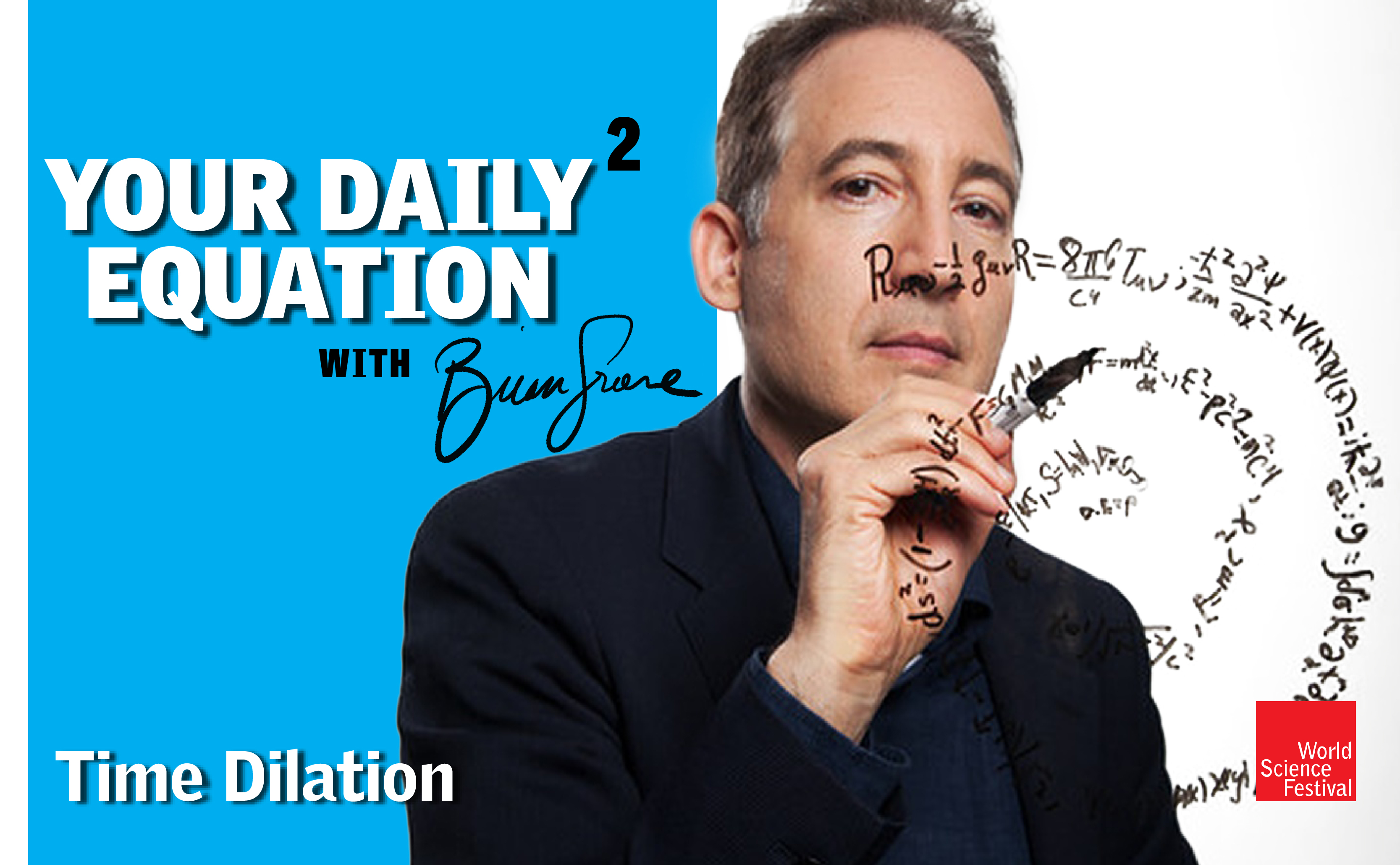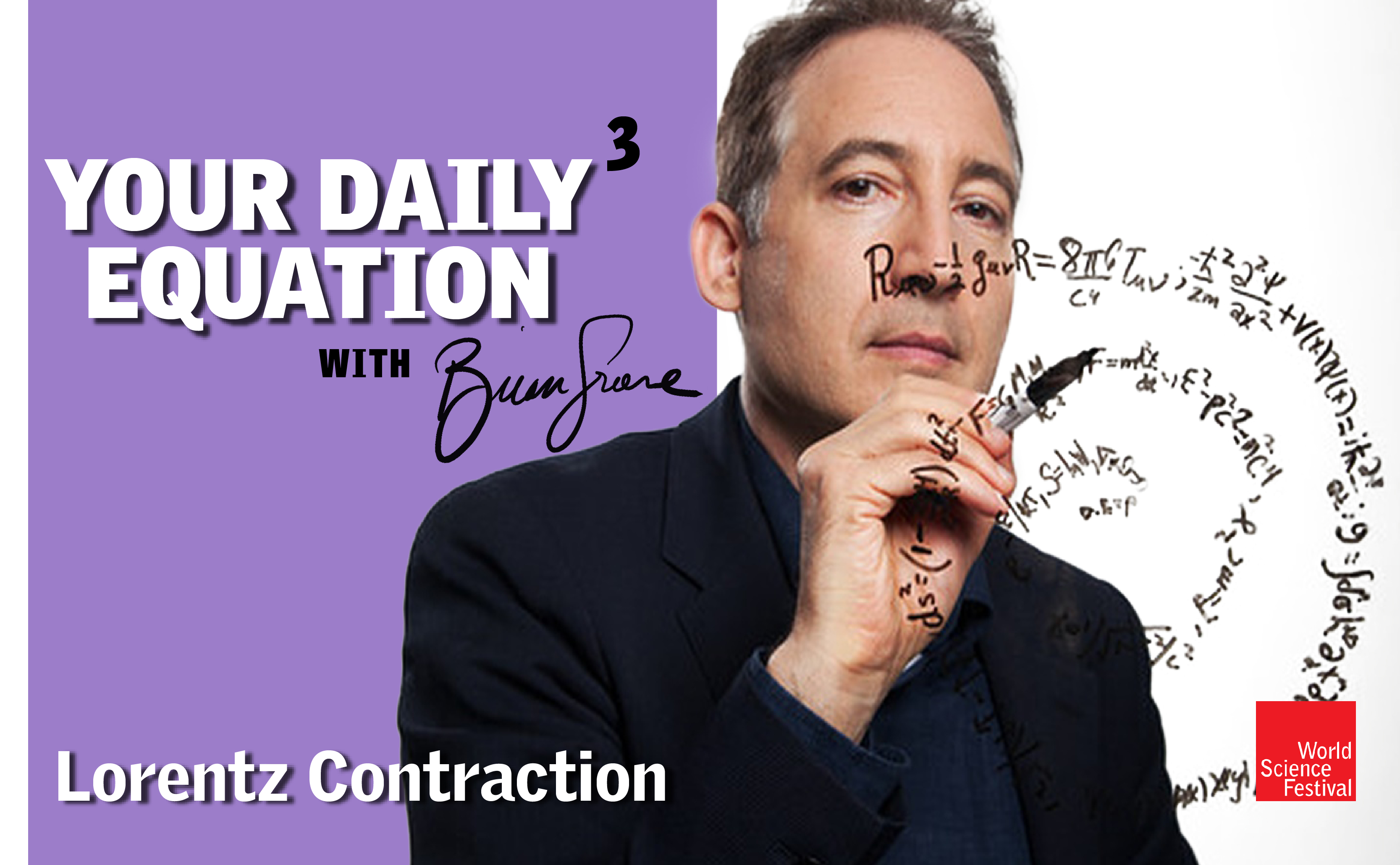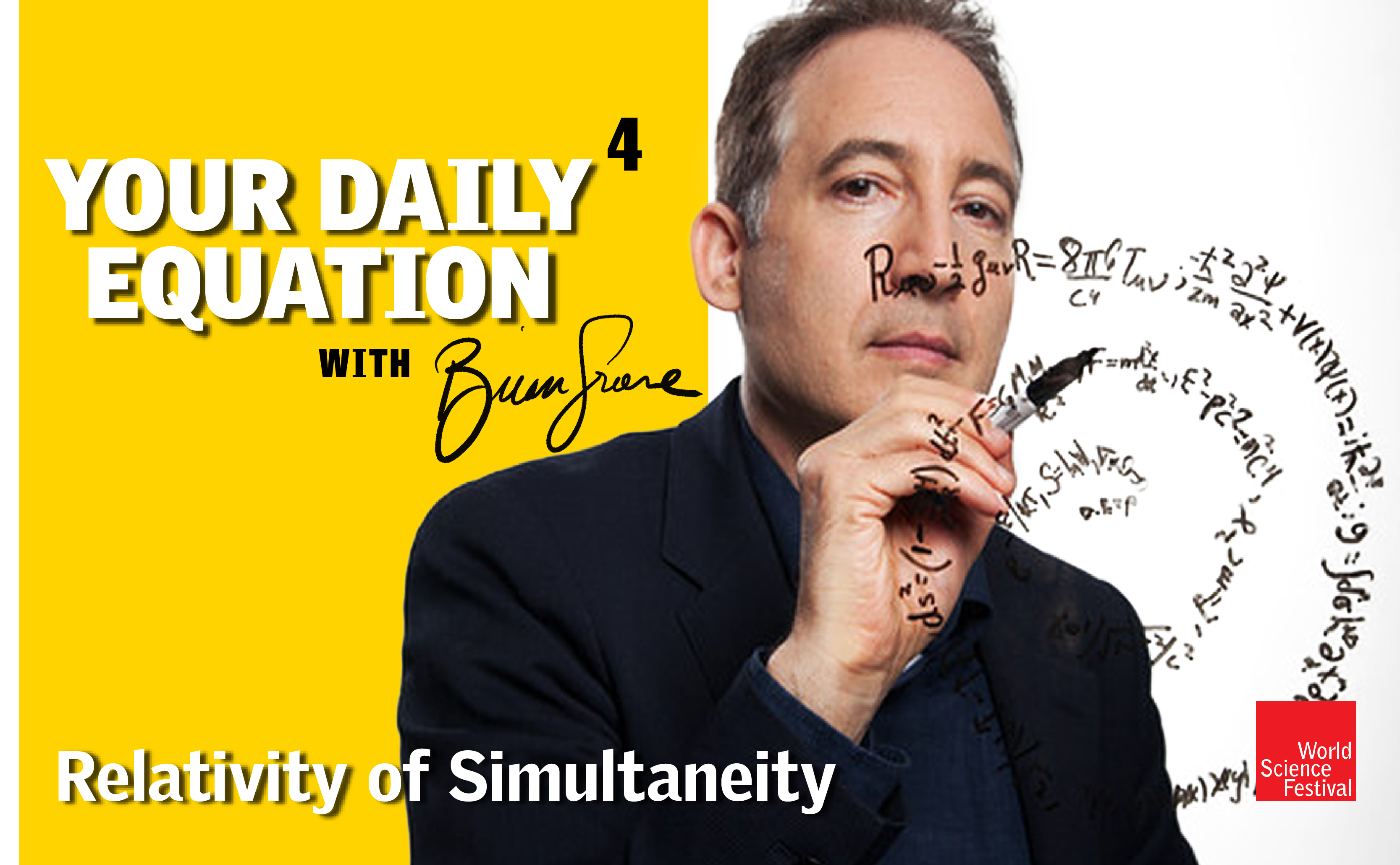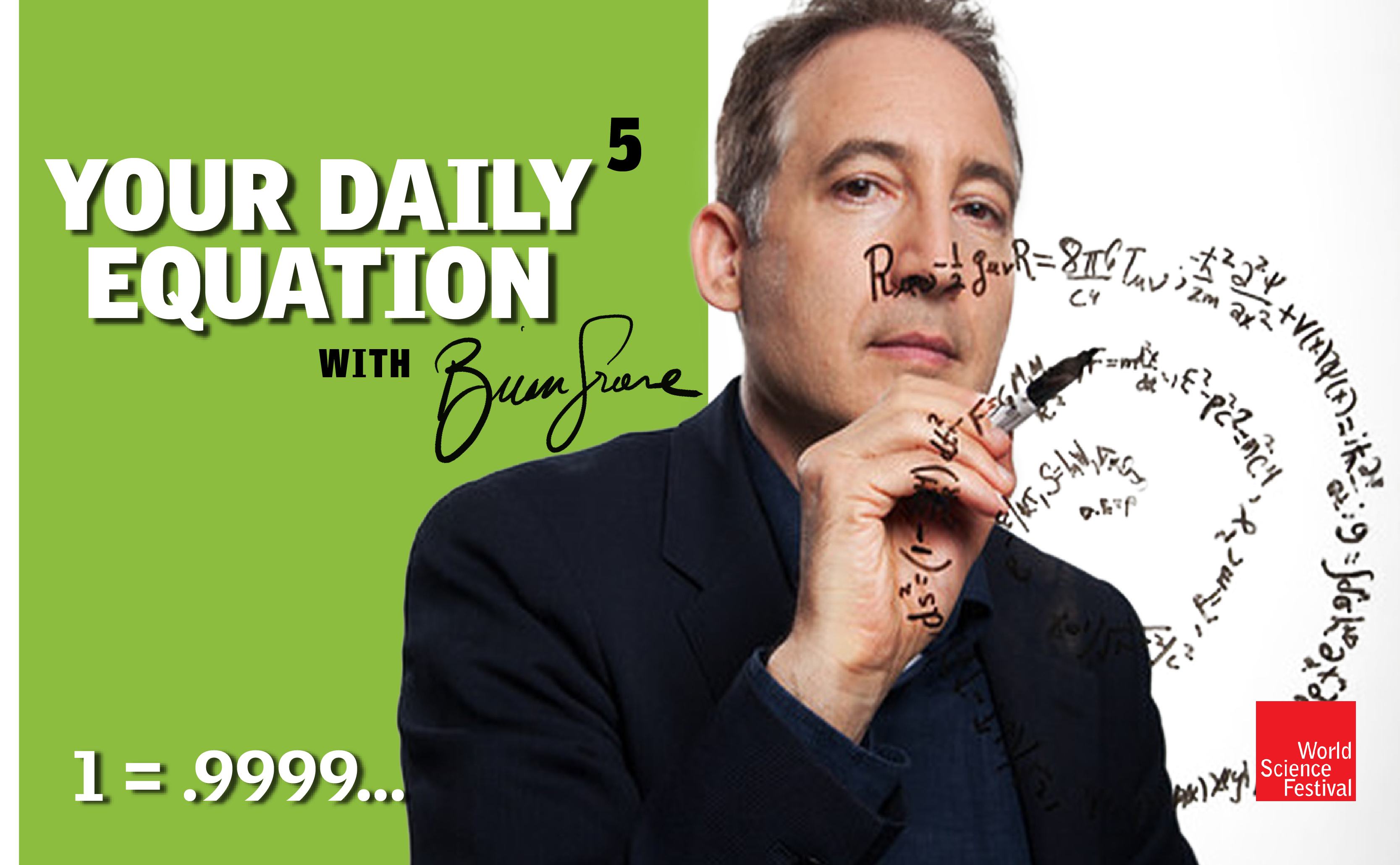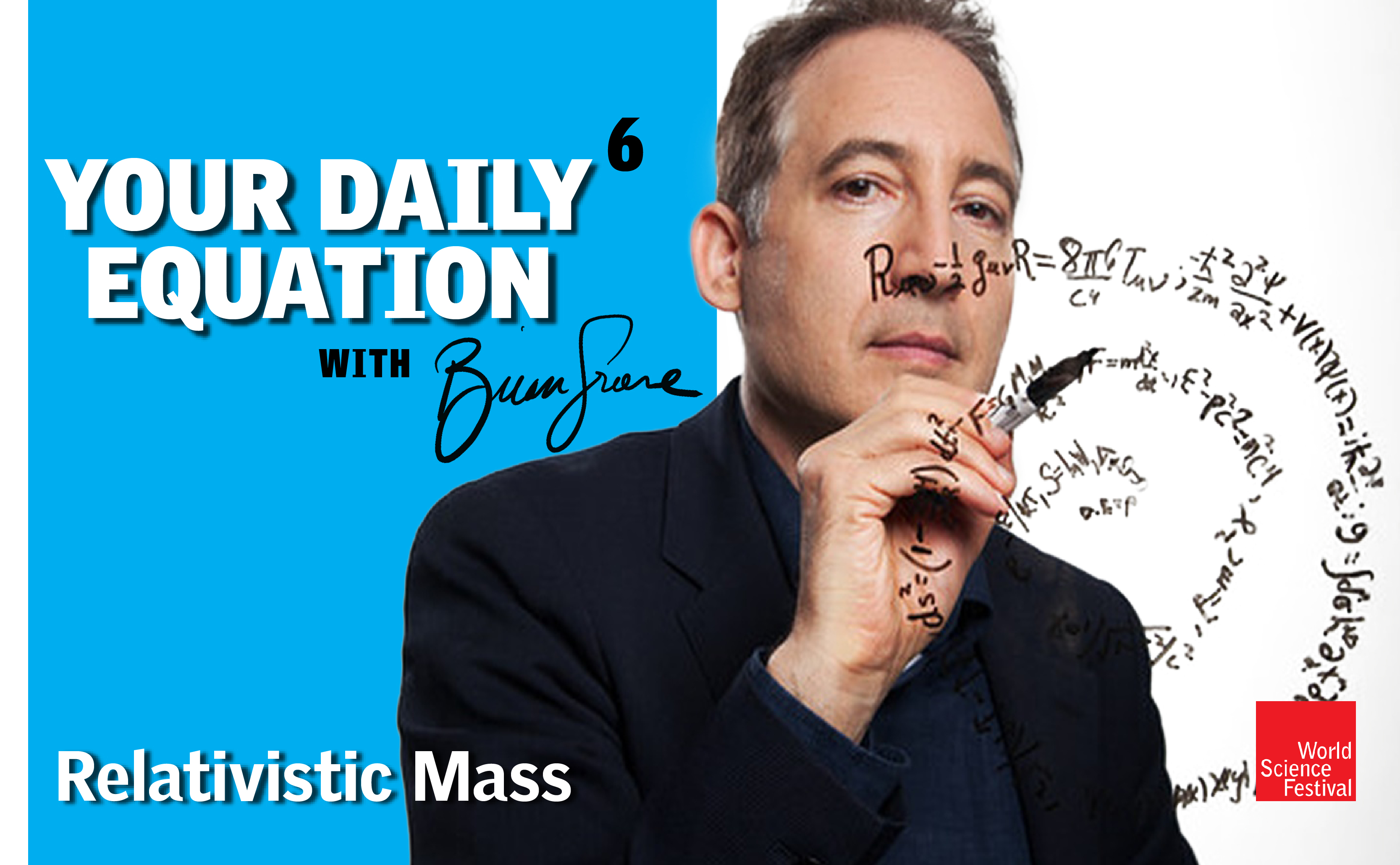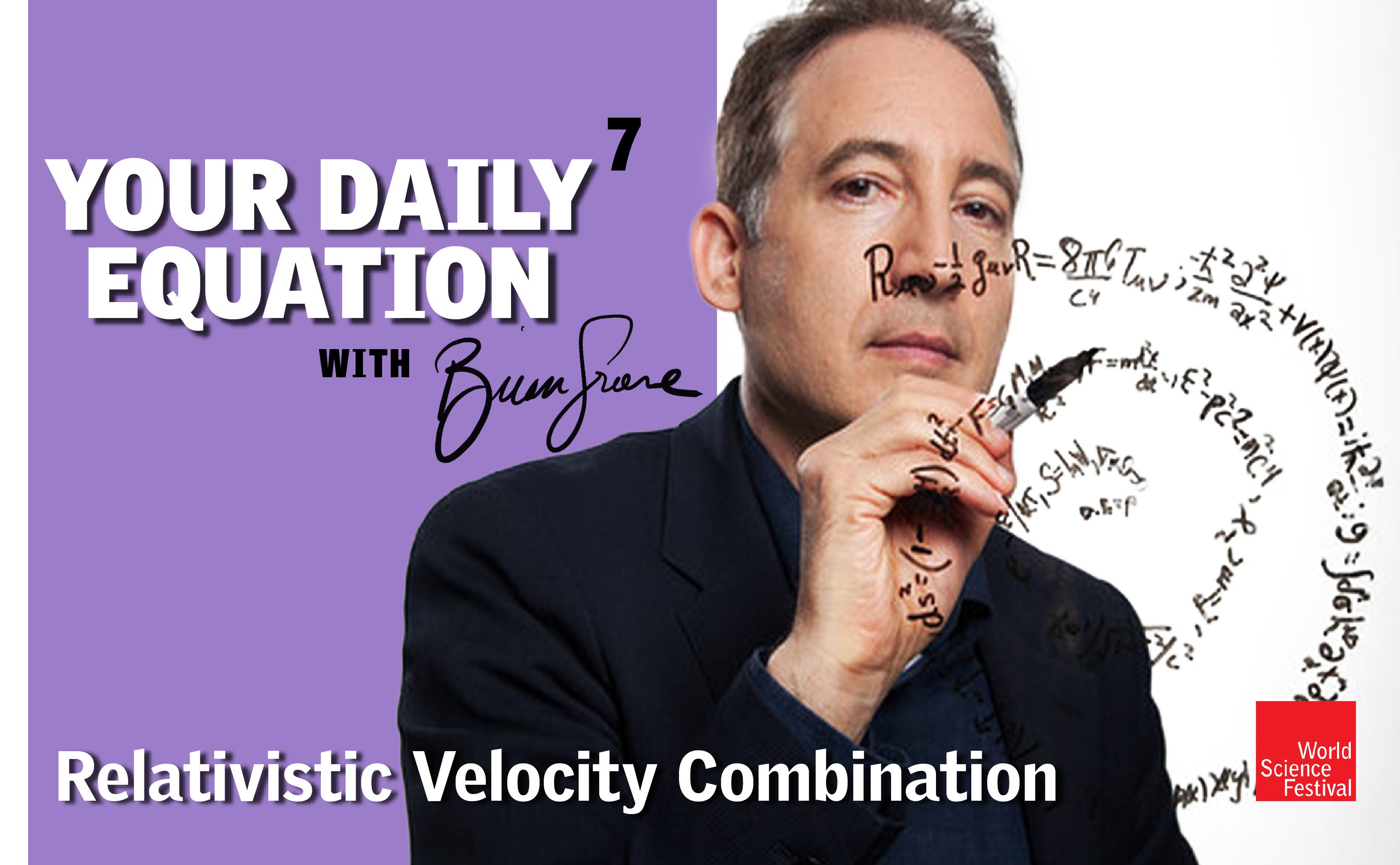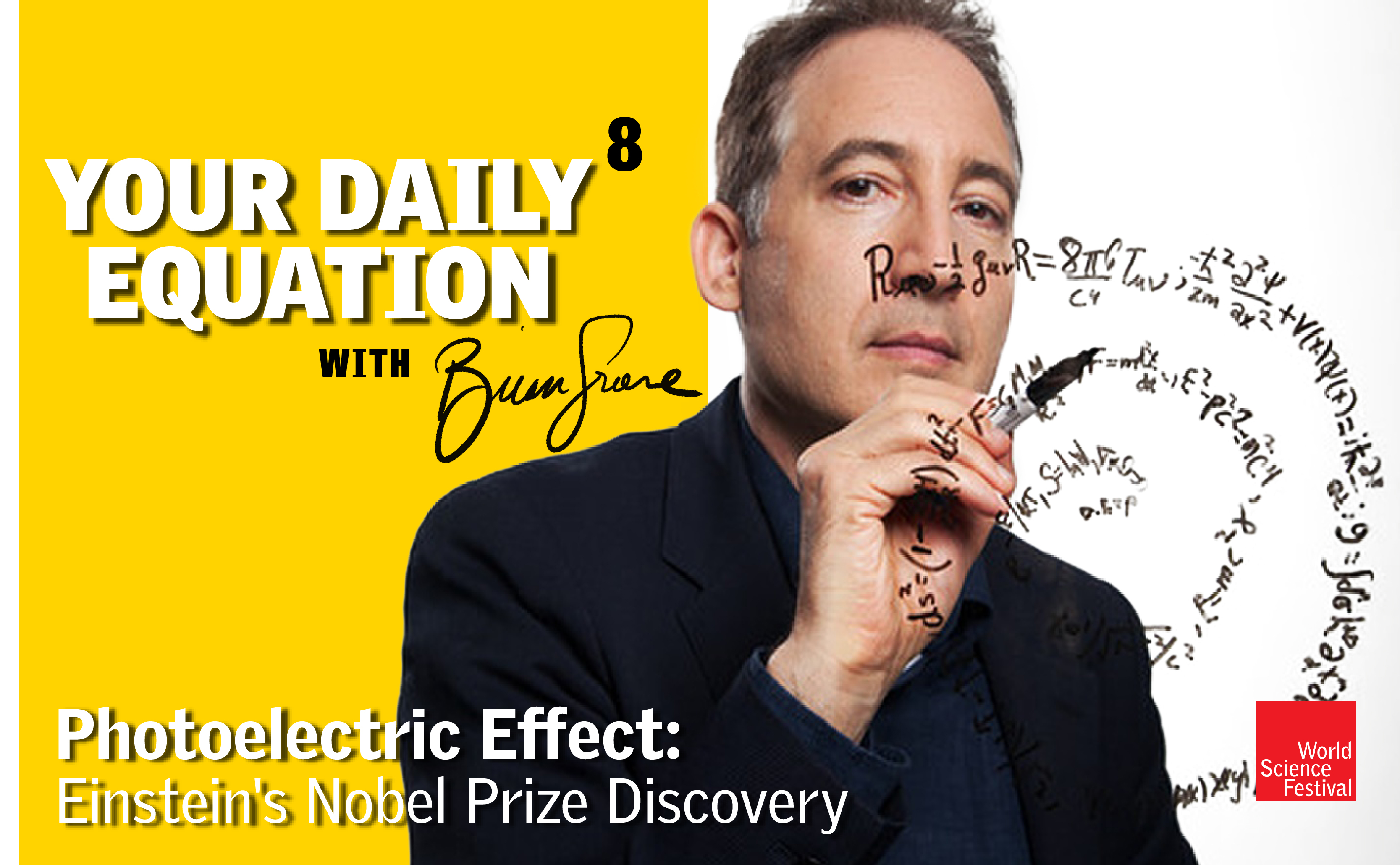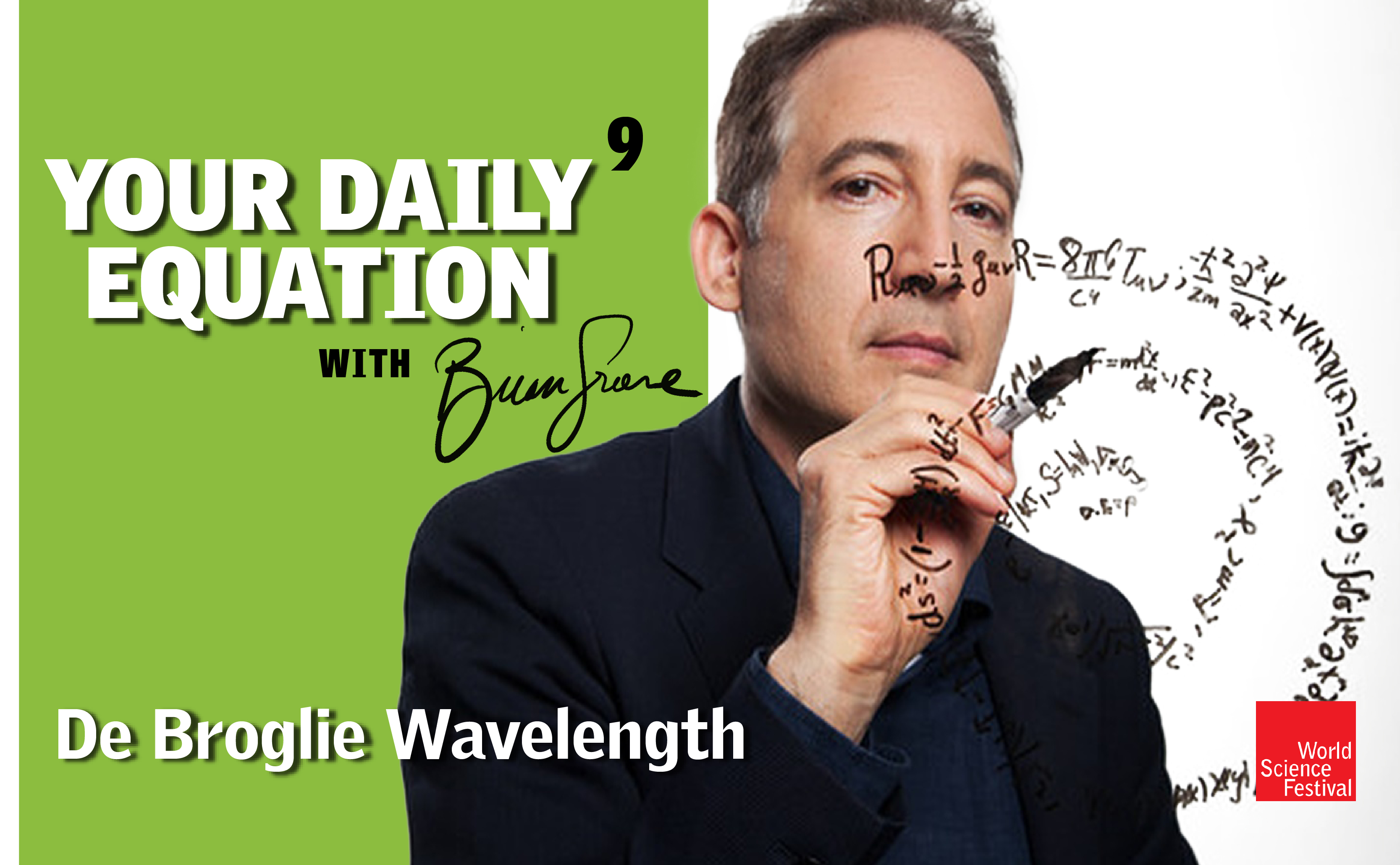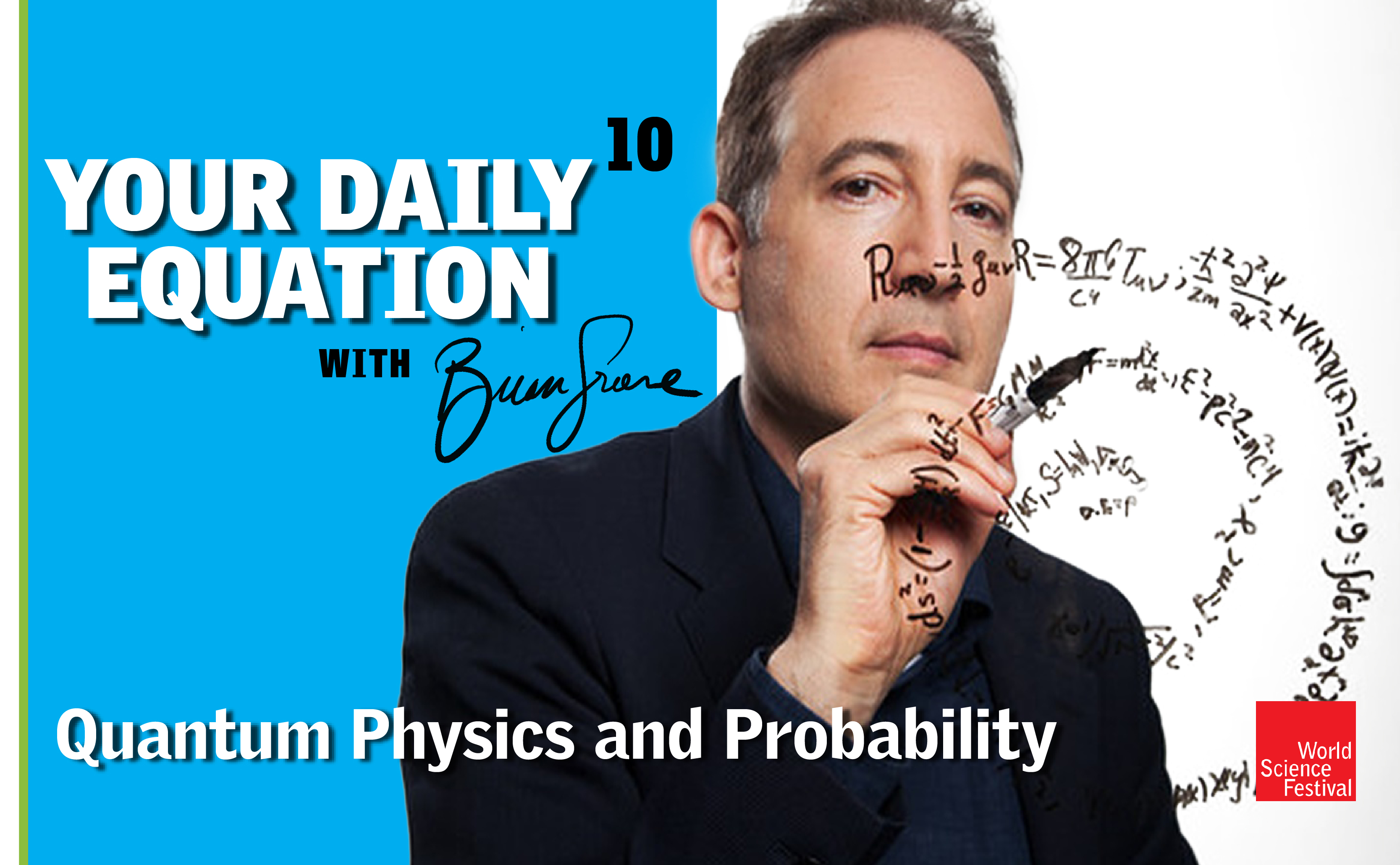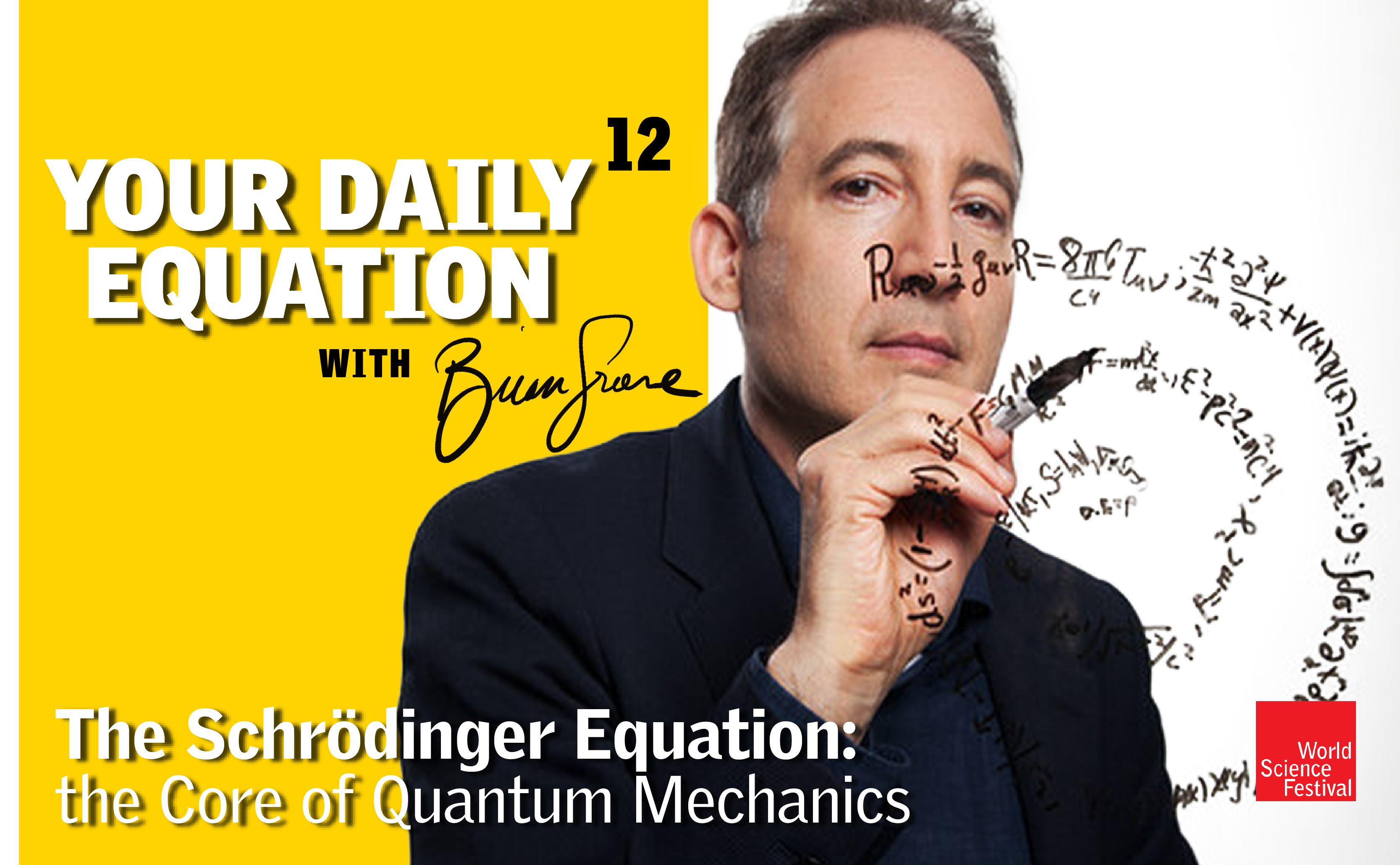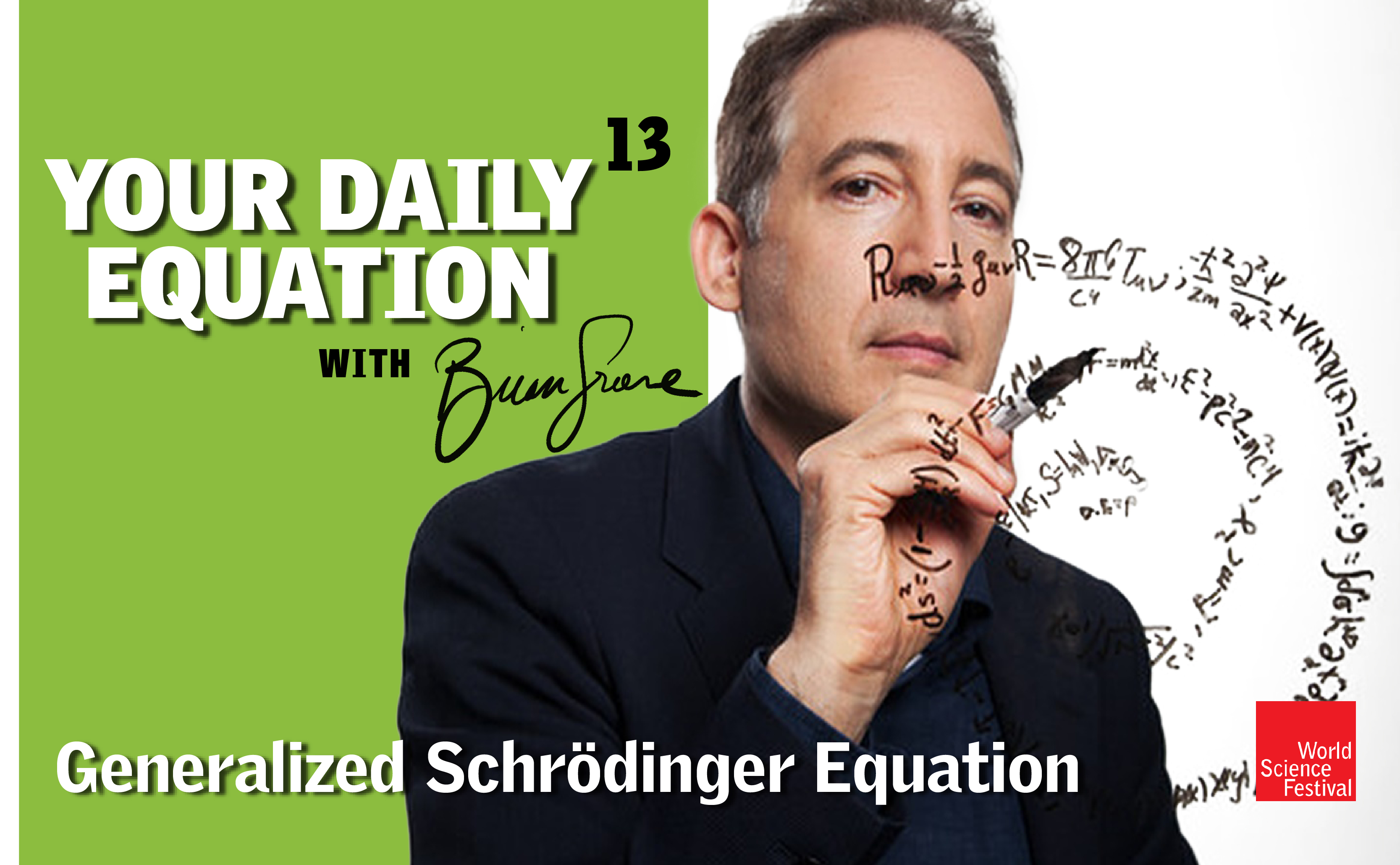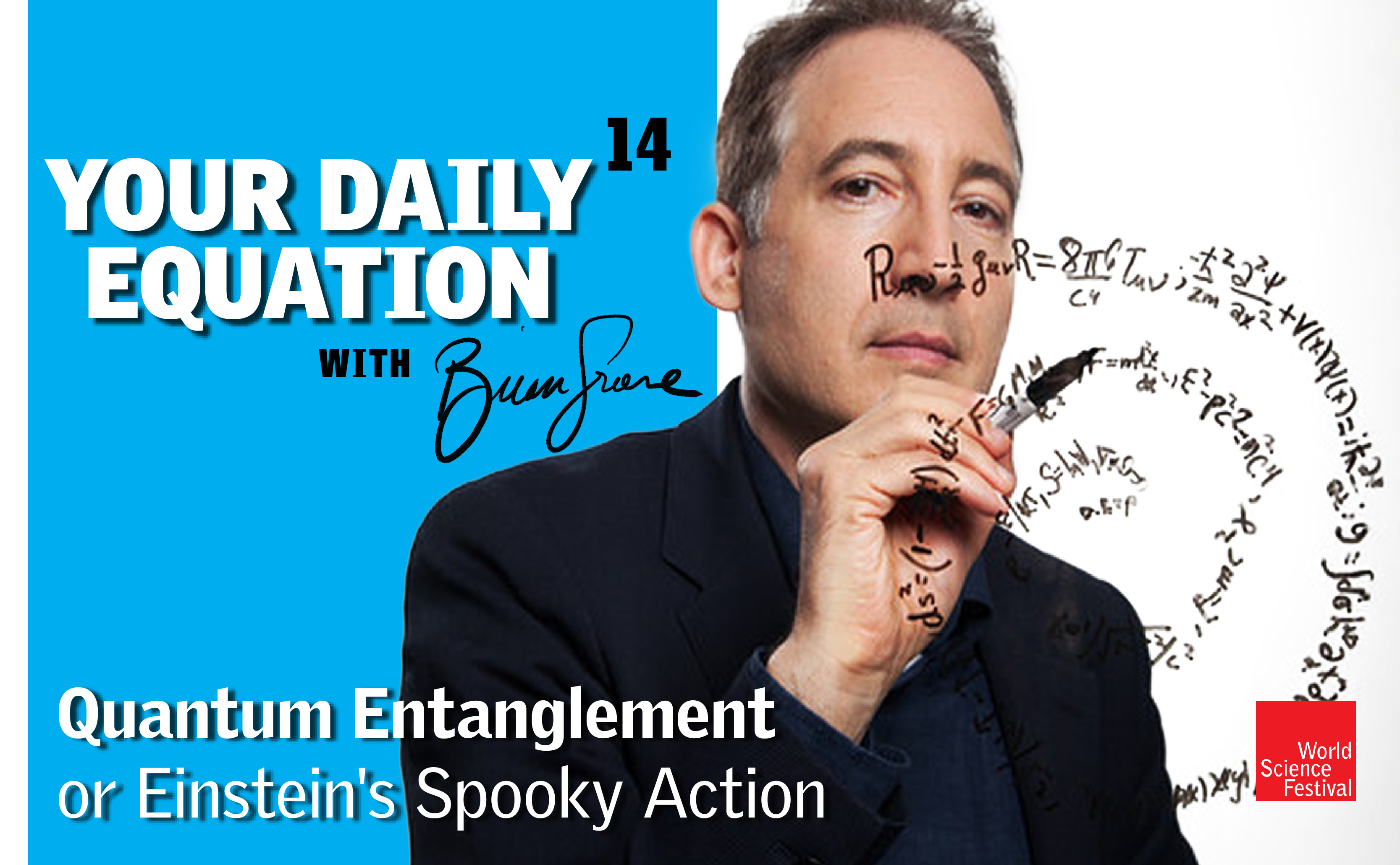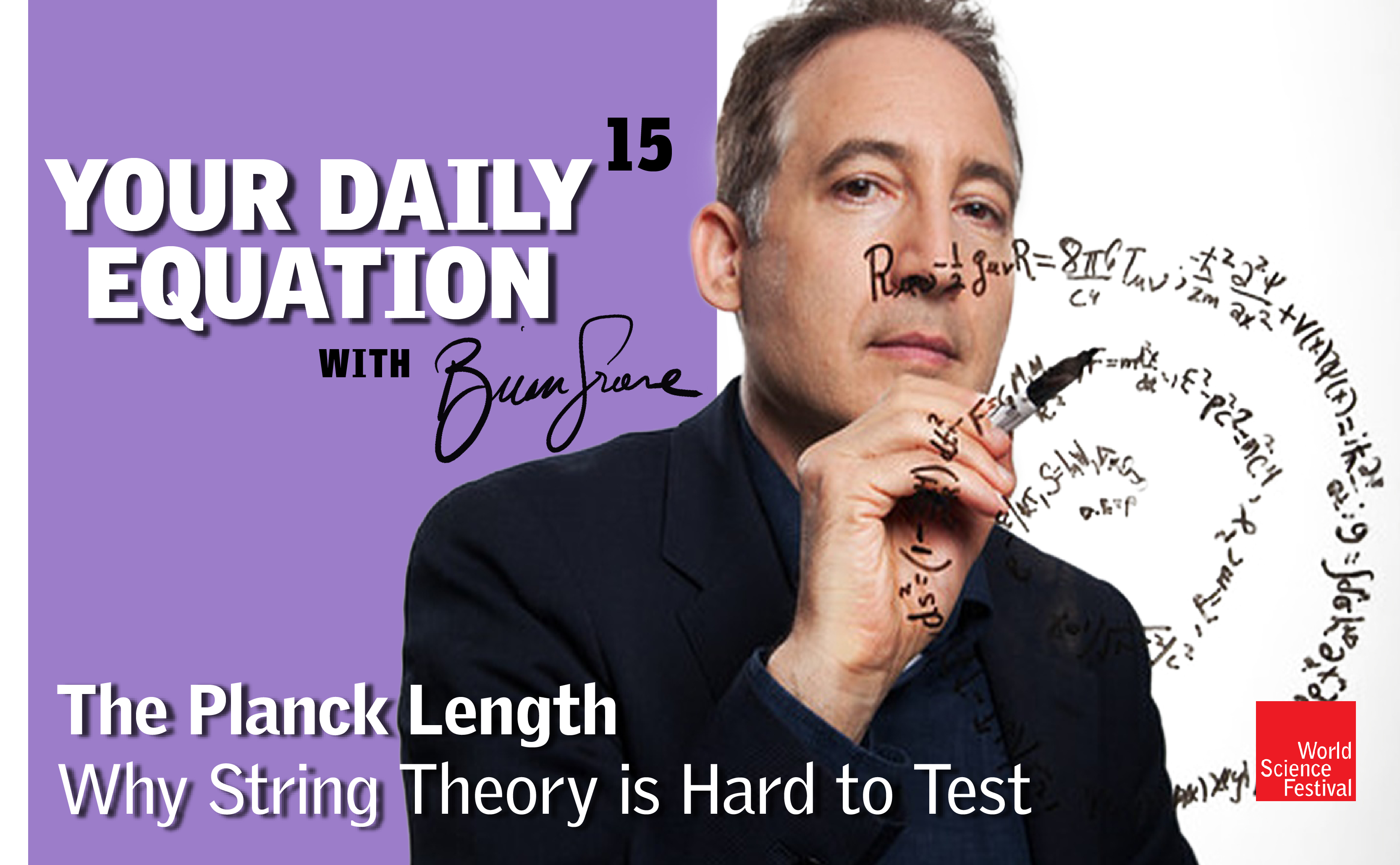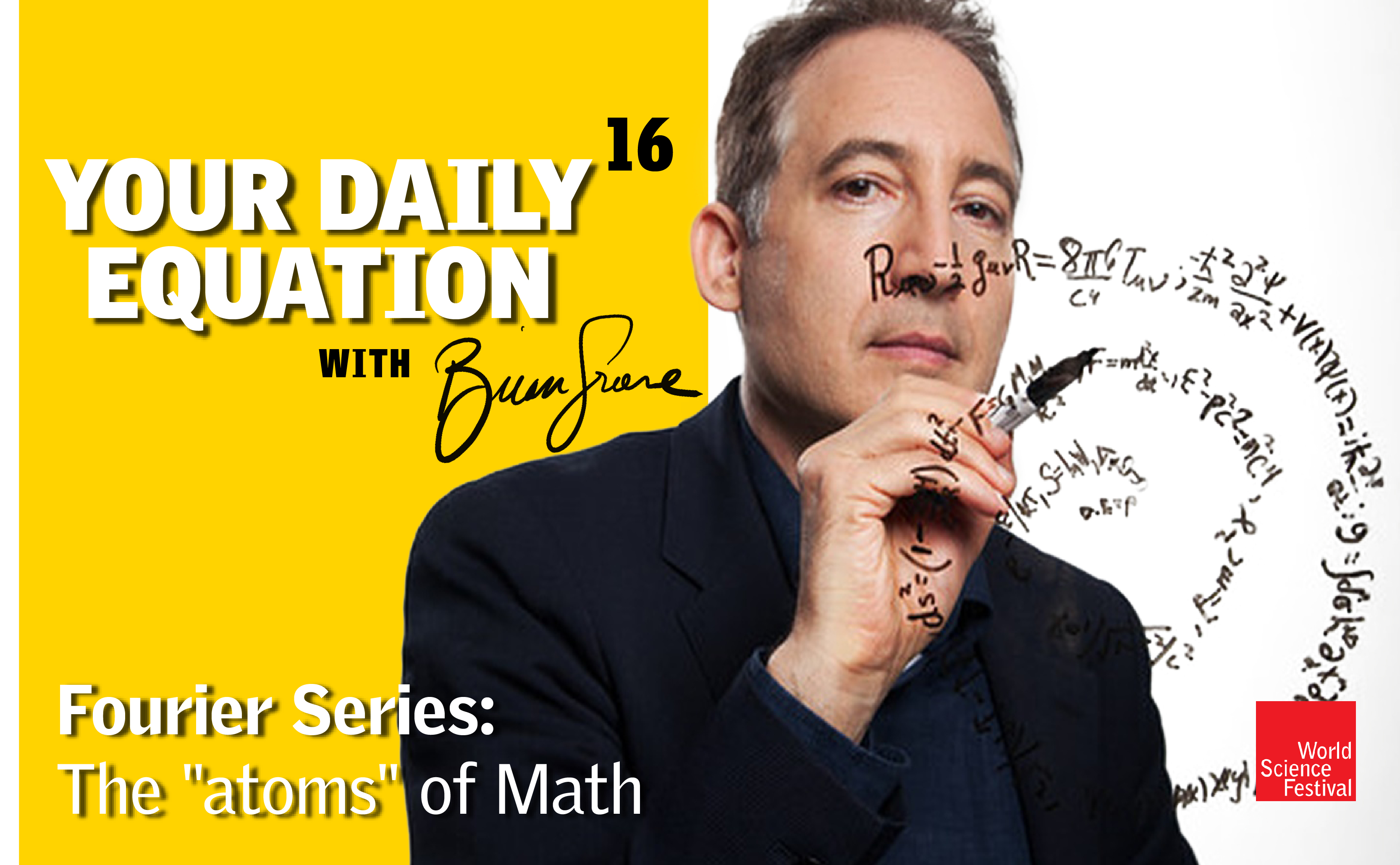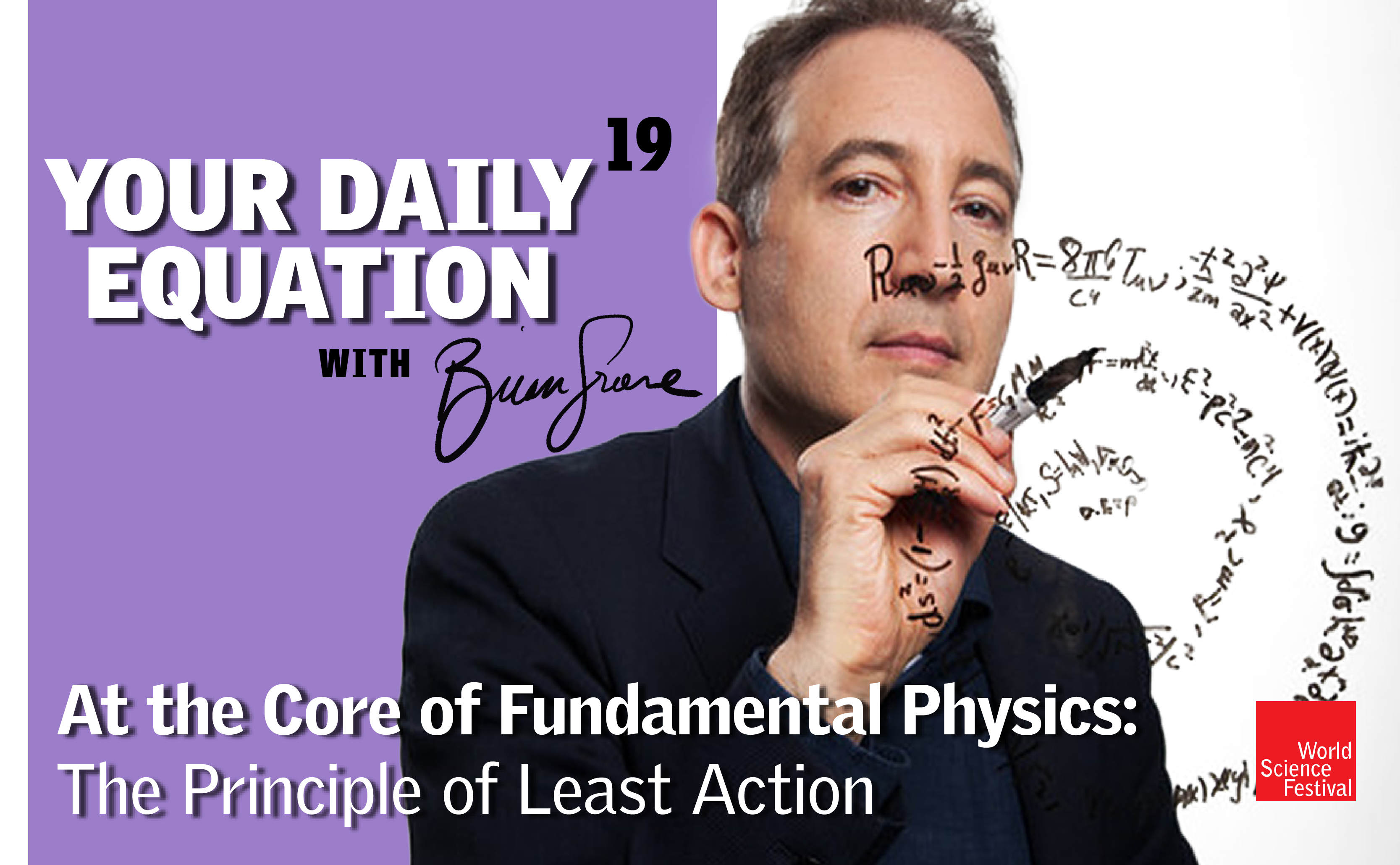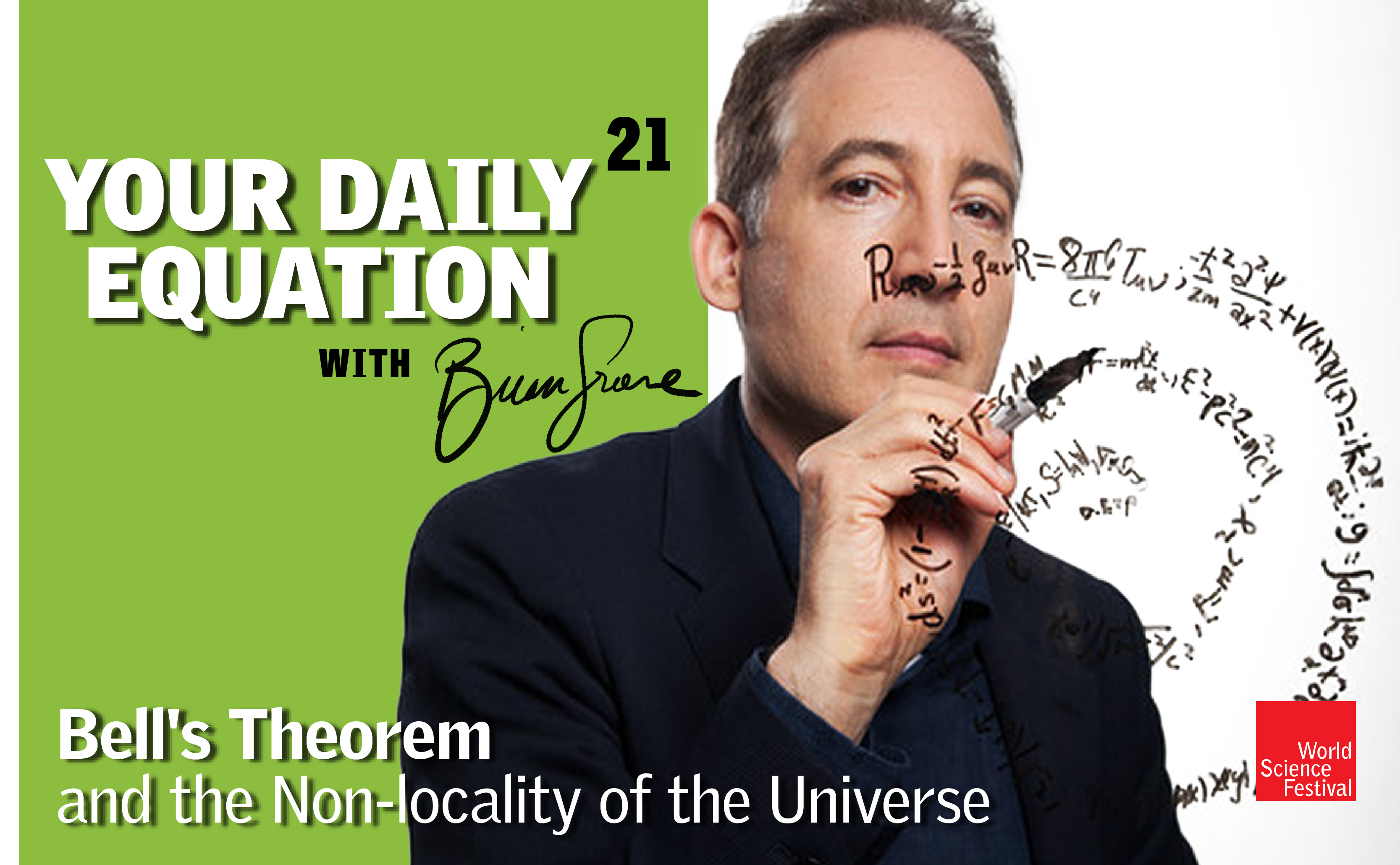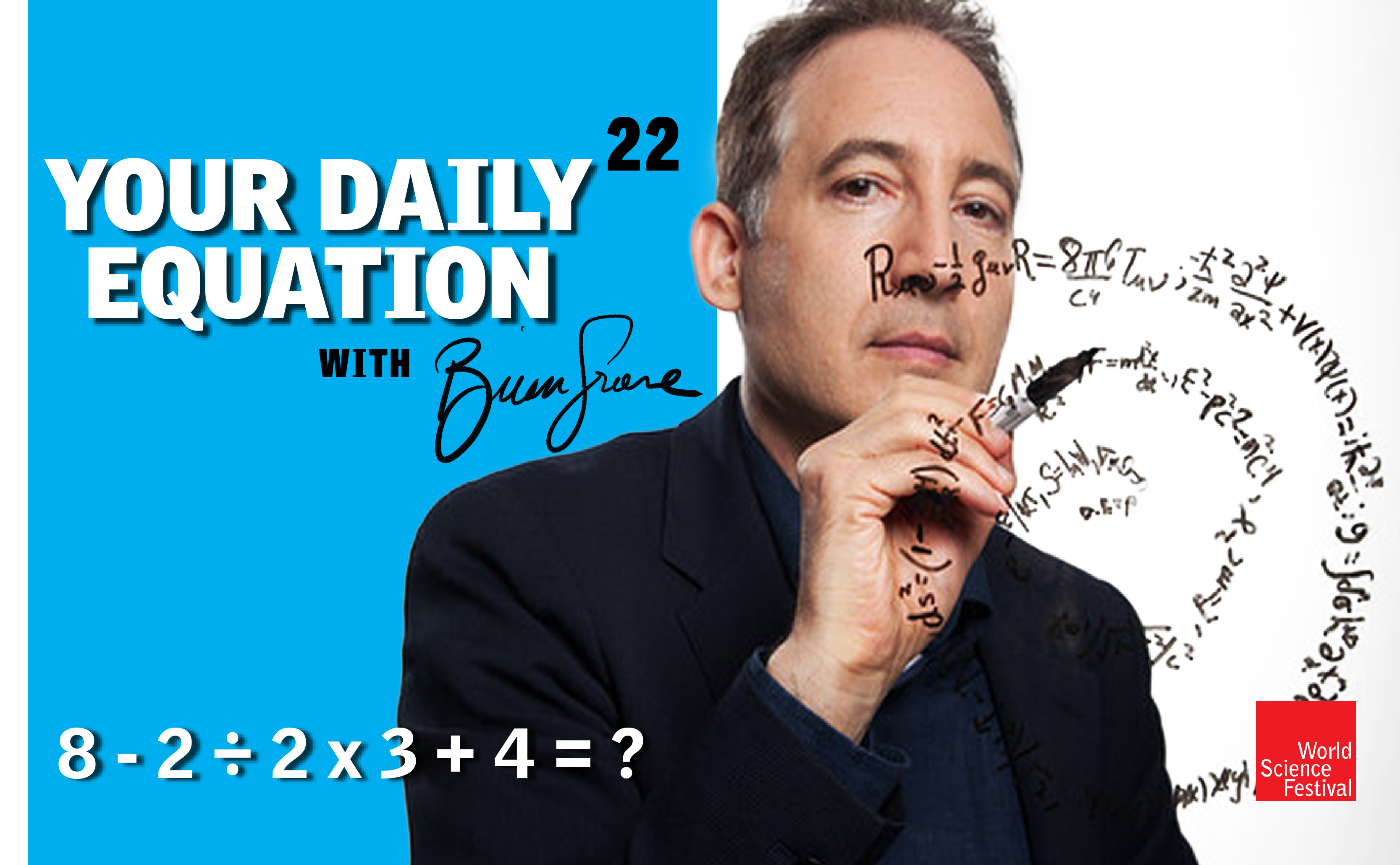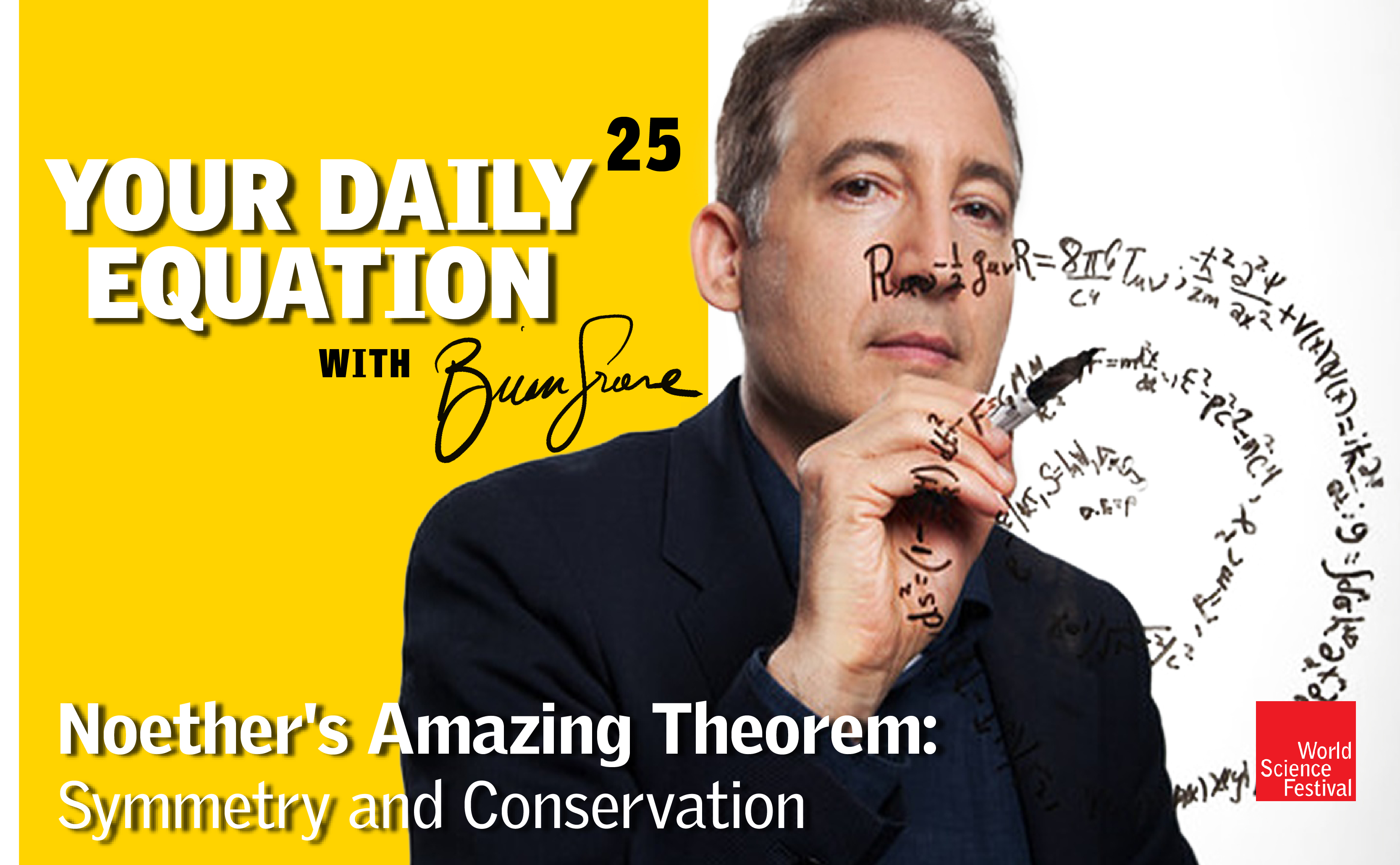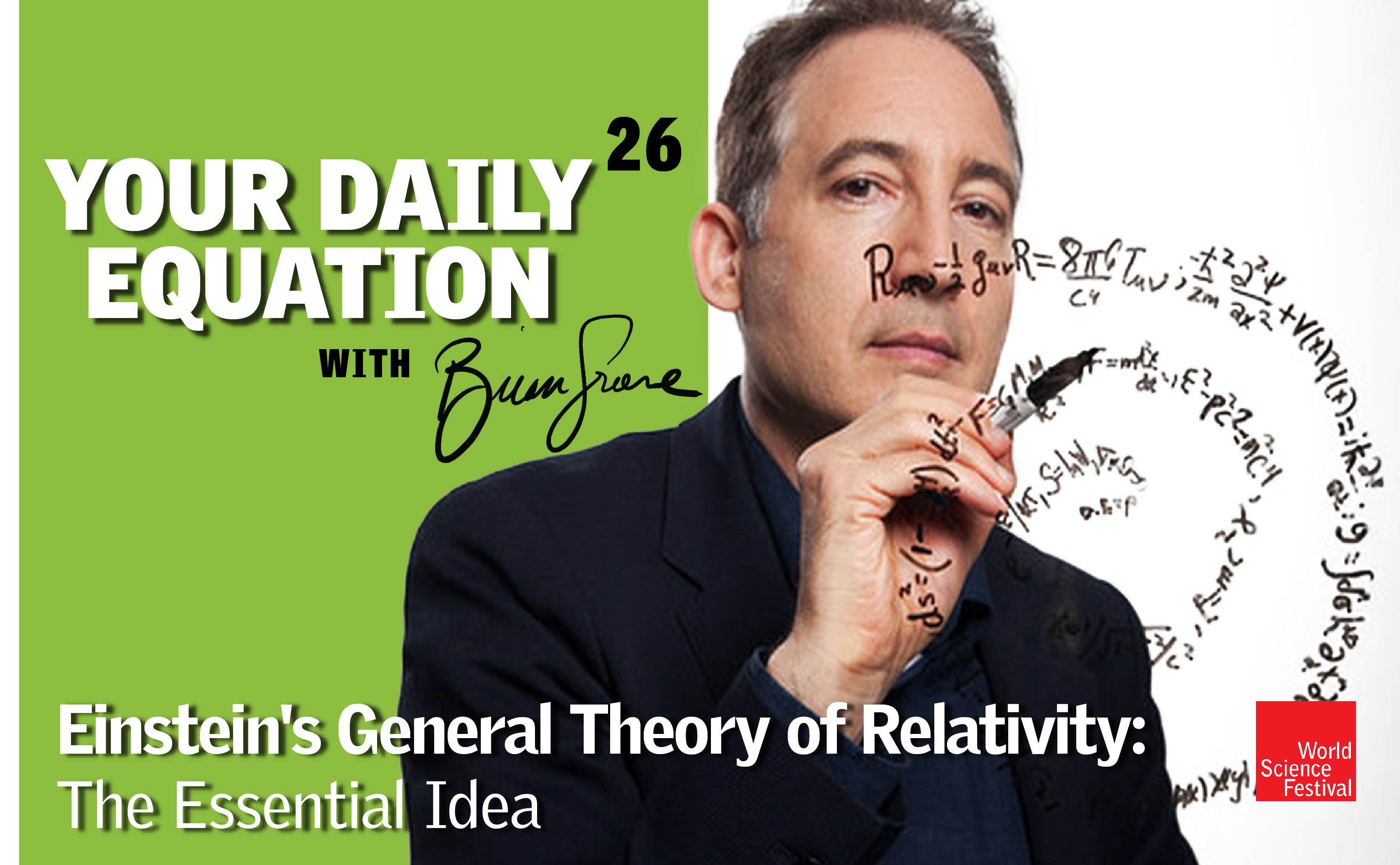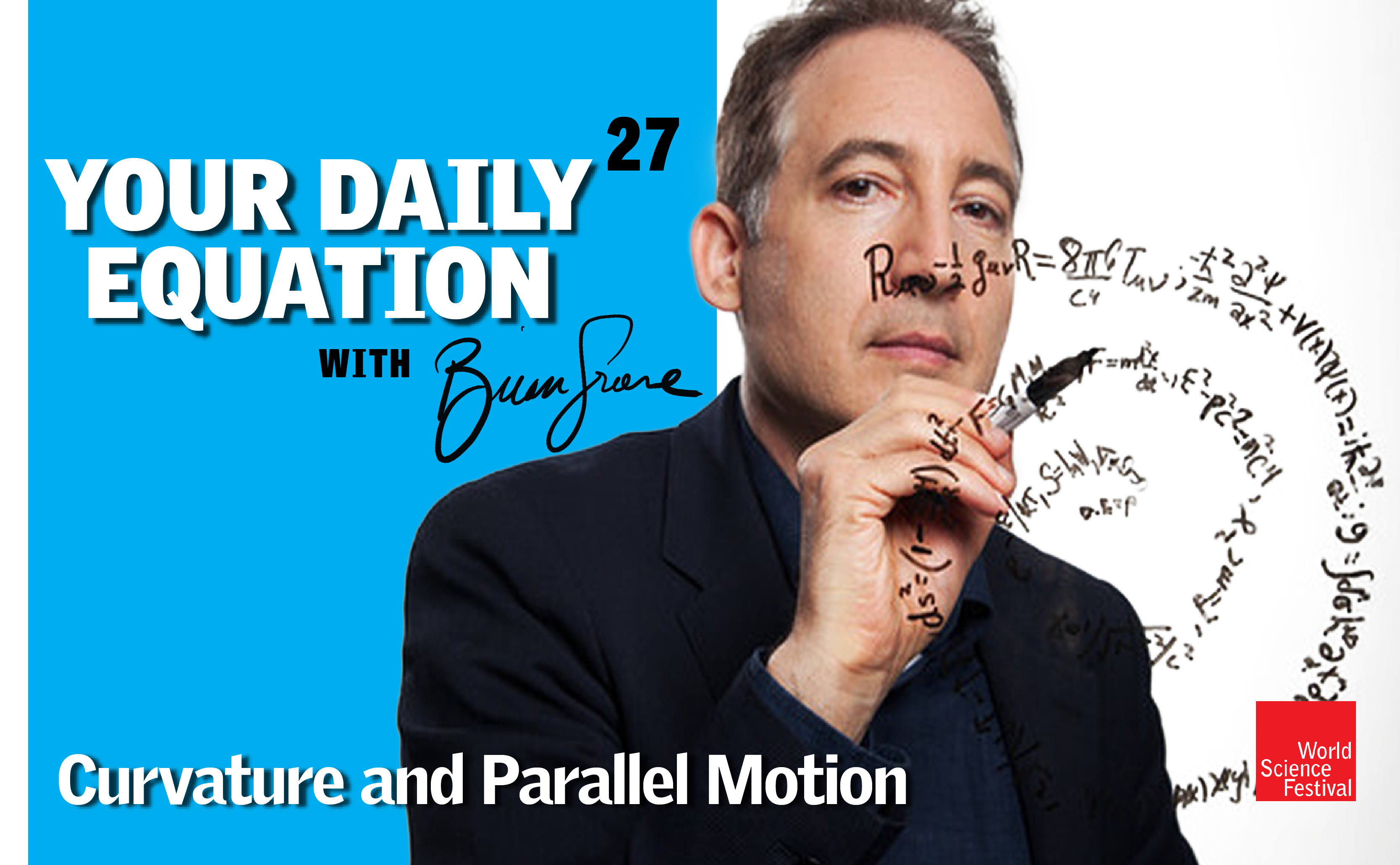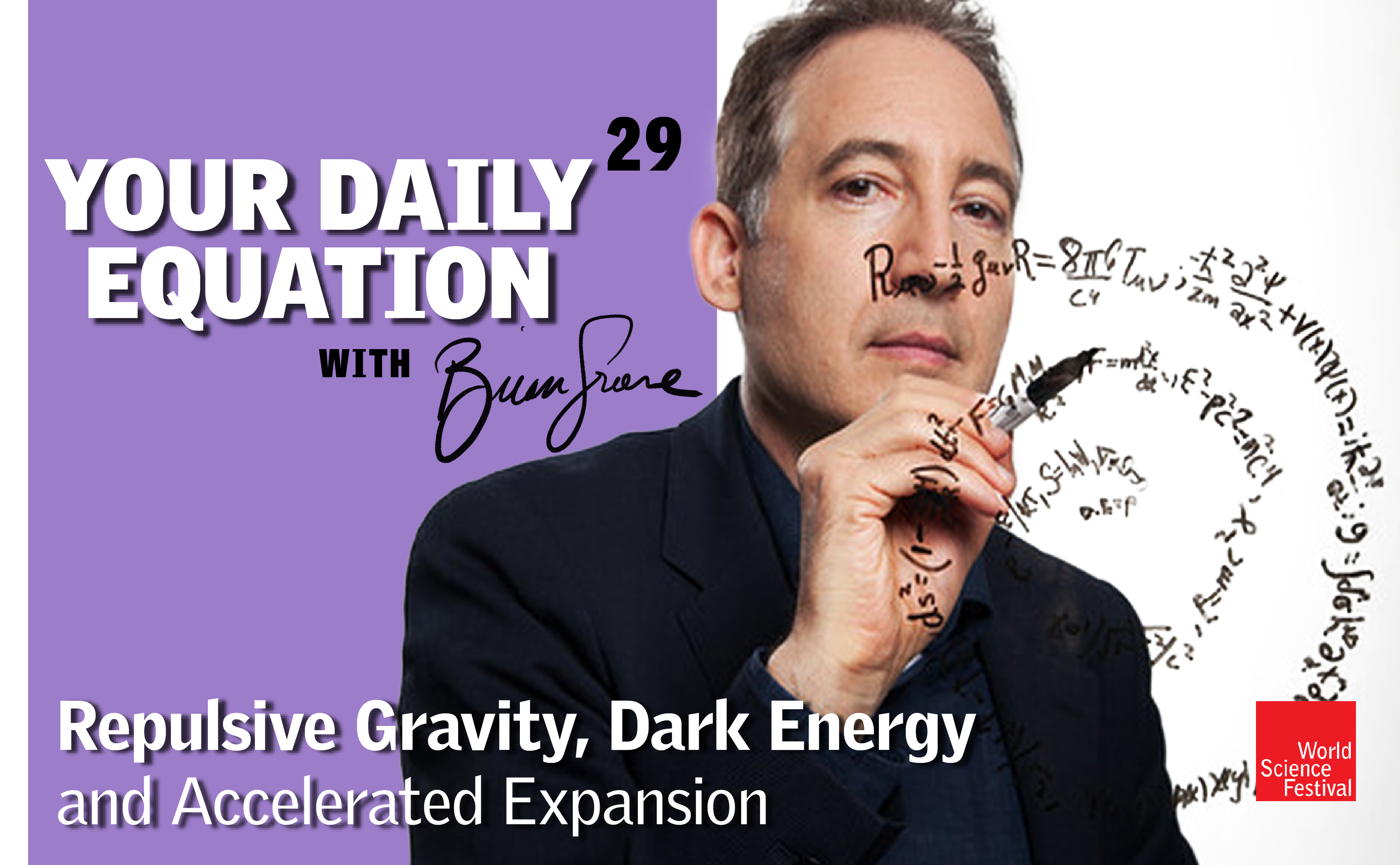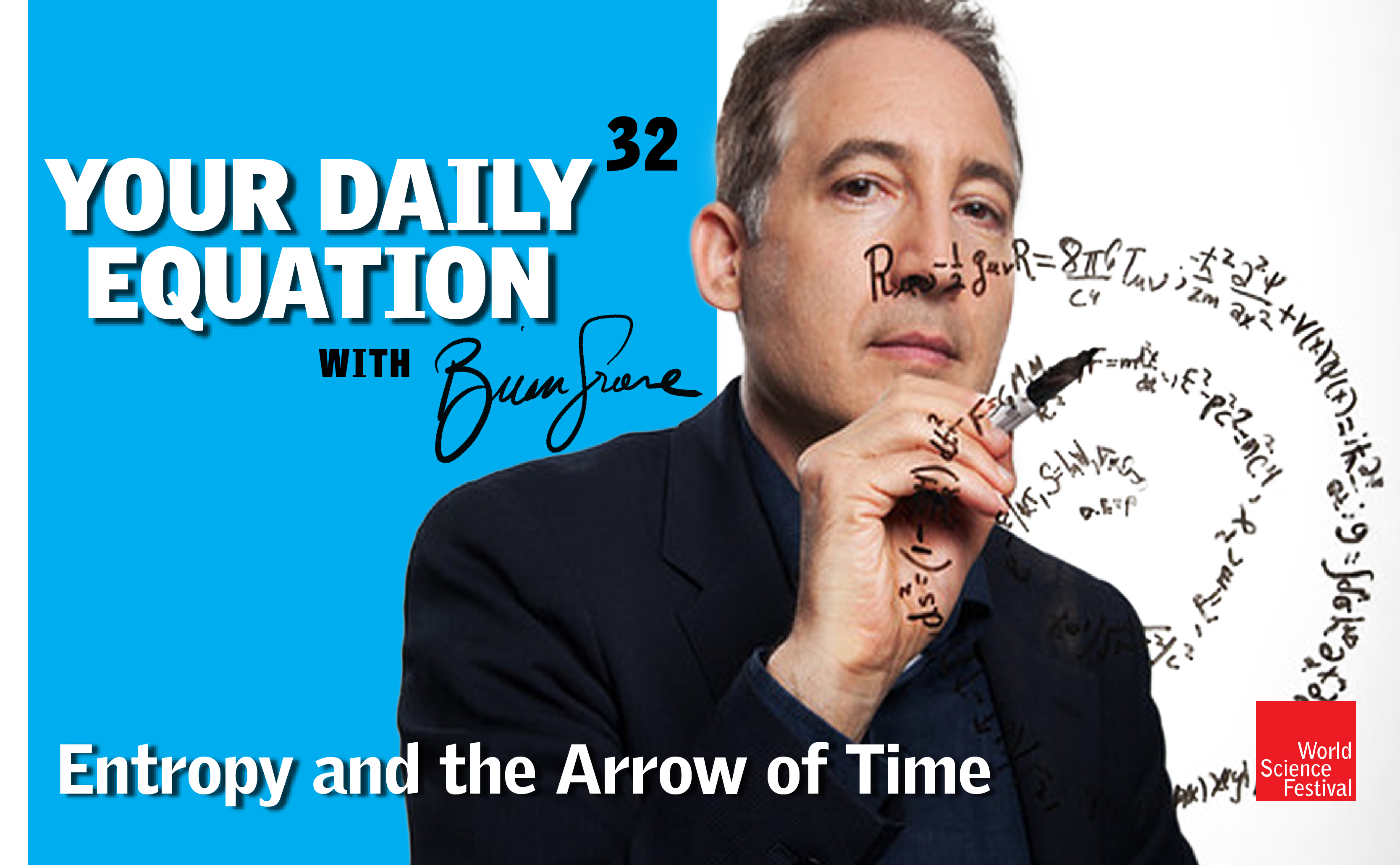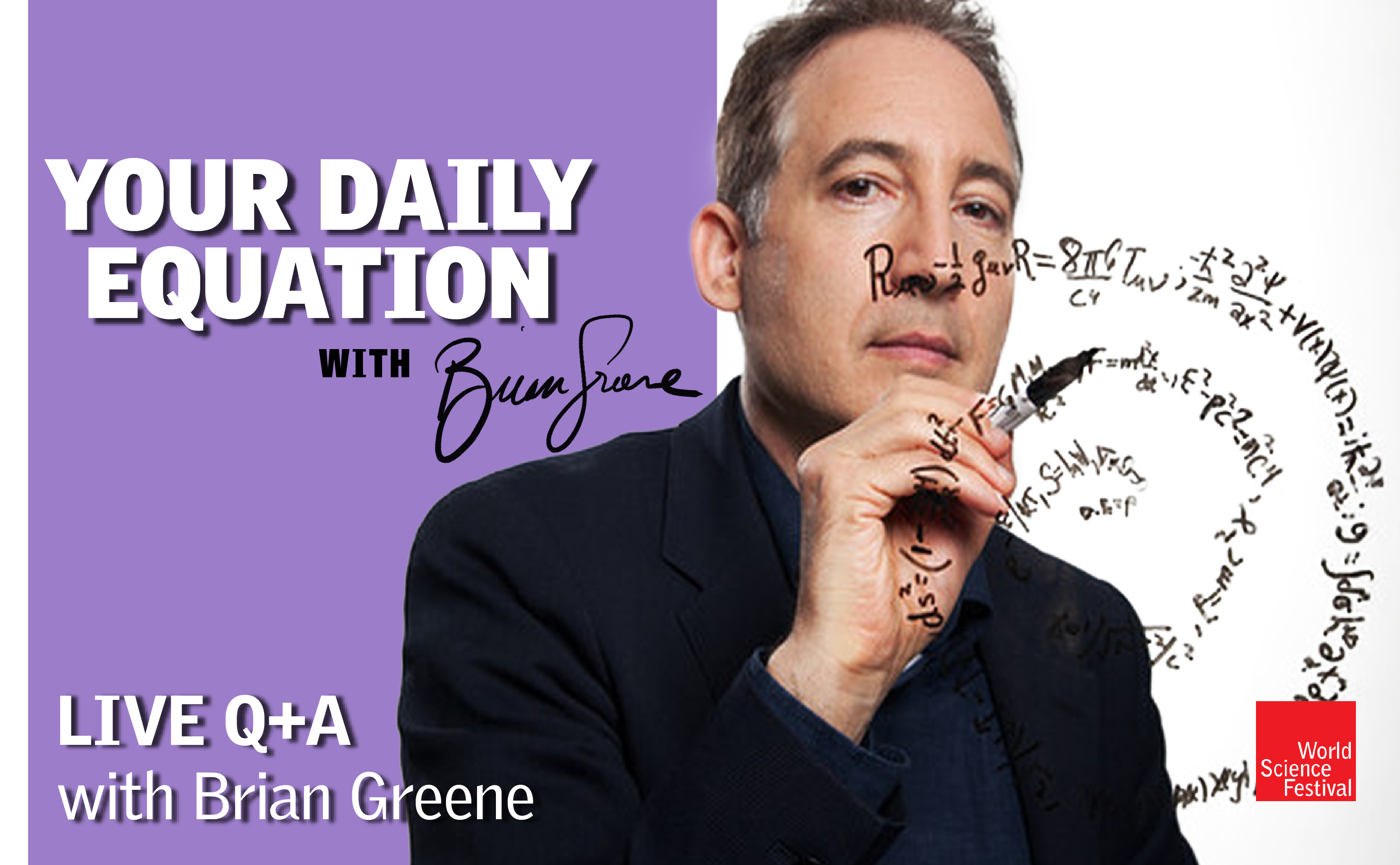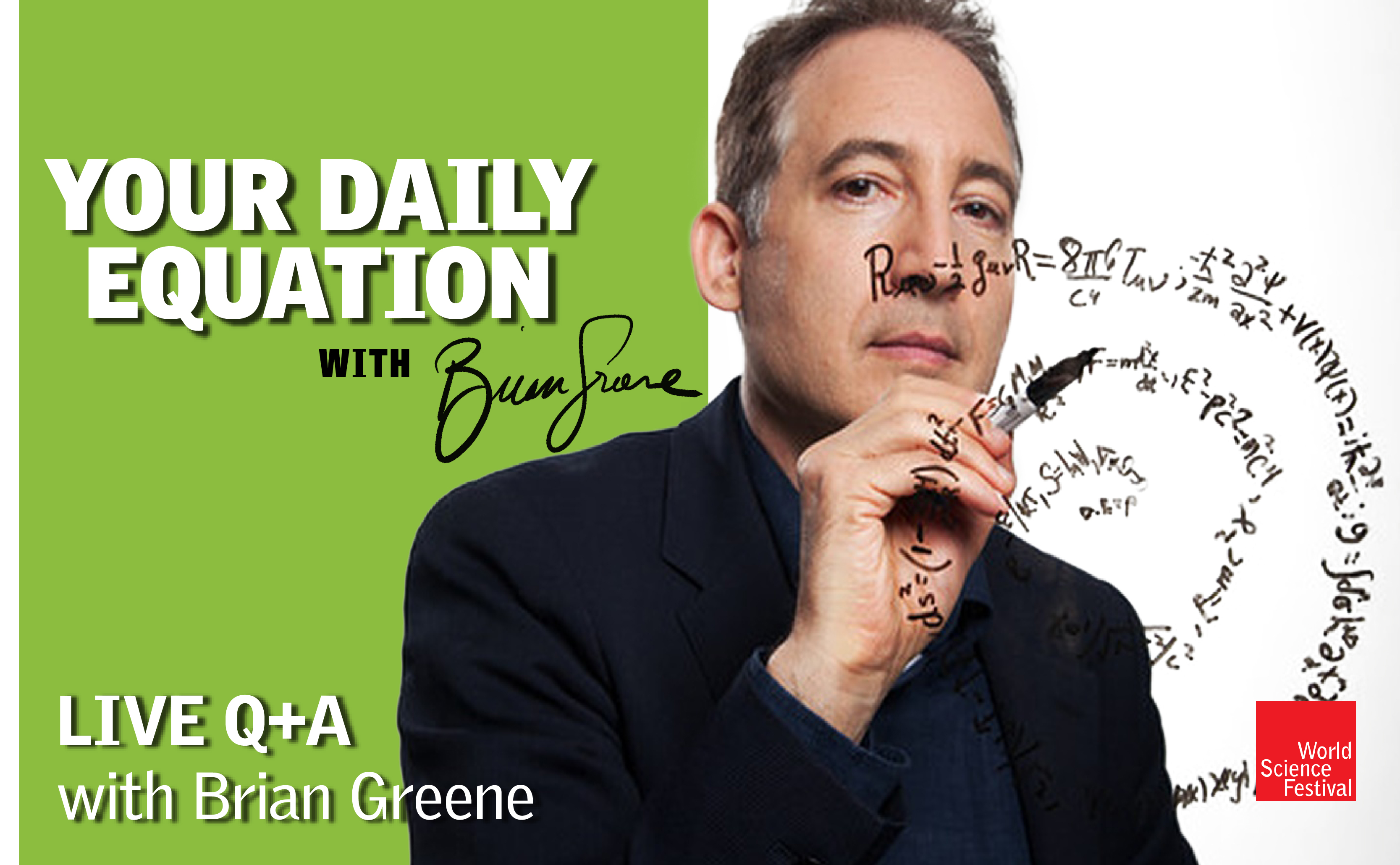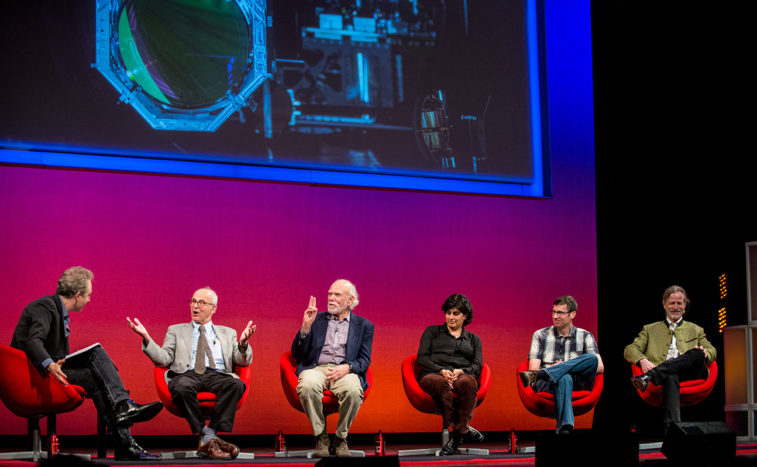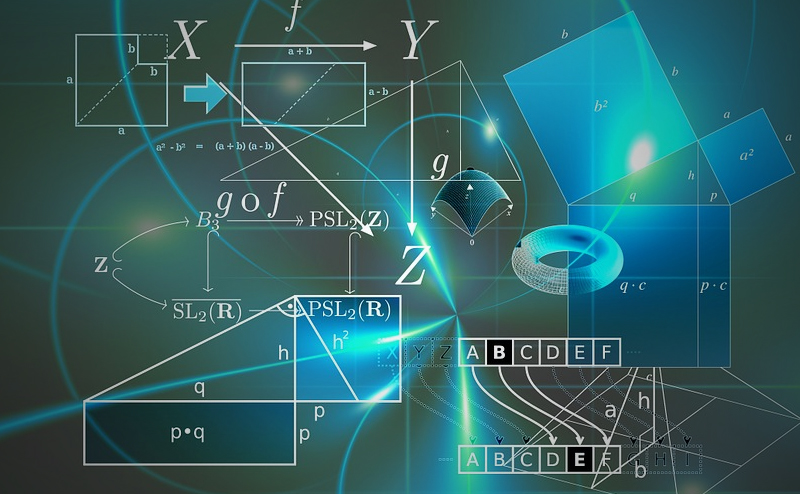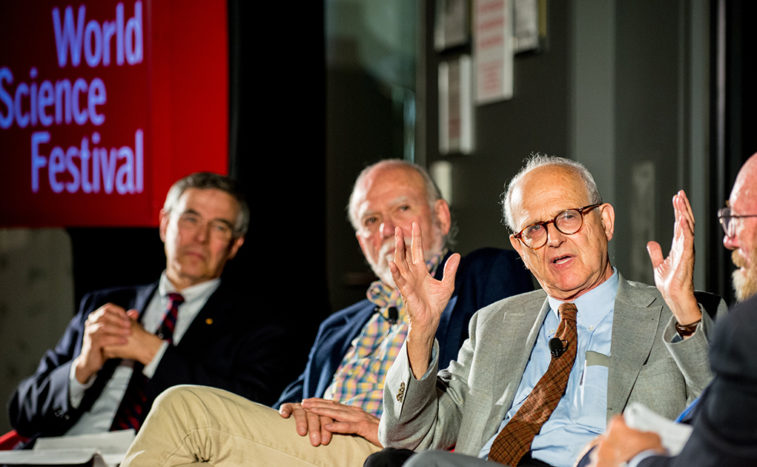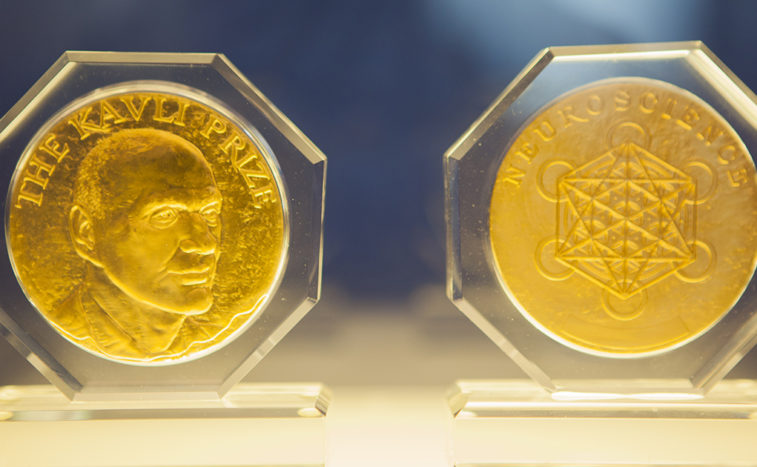#YourDailyEquation with Brian Greene offers brief and breezy discussions of the most pivotal equations of the ages. Even if your math is a bit rusty, these accessible and exciting stories of nature and numbers will allow you to see the universe in a new way. The series includes live Q+As that explore many of the big questions that have occupied some of the greatest thinkers of our age and yielded some of the deepest insights into the nature of reality. Episode 14 #YourDailyEquation: Quantum entanglement is the strangest quality of quantum reality. Einstein called it "spooky," because, well, it is. Join Brian to explore the basic ideas visually and then take a look at the essential equations.Learn More
Speaker 1:
Hi everyone. Welcome to this next episode of Your Daily Equation. And today I’m taking on the weirdest part of quantum mechanics. It’s called quantum entanglement. Many of you asked me to show the math behind it, and I will show the math behind it. It’s quite straightforward mathematics, so it’s a gentle equation today, but one whose implications are incredibly deep, incredibly profound.
Okay, so let me set the stage for this idea of quantum entanglement. It goes back to the 1930s, Erwin Schrodinger is thinking about the strange new features of quantum mechanics embodied in his mathematical description in terms of these probability waves or wave functions in the more technical language. But it’s really a paper of Einstein’s. Einstein again. This guy, right? But this is a paper with two colleagues, Boris Podolsky and Nathan Rosen, and they write a paper that makes use of quantum entanglement to try to make a claim that quantum mechanics cannot be the full description of reality.
This of course, Einstein makes a pronouncement like that about quantum mechanics and it rocks the world. And not just the scientific world, let me show you here. Here’s The New York Times. “Einstein attacks quantum theory. Scientist and two colleagues find it is not complete,” even though correct. And that’s actually a really good description of Einstein’s perspective. As I’ll discuss toward the end of this little episode, Einstein is not trying to say that quantum mechanics is wrong in any sense of making incorrect predictions about the world. He’s only saying it’s wrong in the sense of it claiming as some of its adherents did and still do, that quantum mechanics gives a full description of the objective world. That it is not somehow an approximate description, it doesn’t leave anything out. It’s a full description of the world. Einstein, as I’ll describe at the end, is claiming in this paper that entanglement establishes, in Einstein and his colleagues’ minds establishes that quantum mechanics does leave something out. That’s his point.
But let me start by actually talking about this entanglement itself. And it’s right here in Einstein’s paper. This is the actual paper right here, with Podolsky and Rosen. And I can just thumb through. You should take a look at this paper because look at this page one, page two, just a few equations, nothing too fancy. Page three, page four, that’s it. Four page paper that has incredible ramifications. And there’s nothing more complicated here than a little bit of very basic quantum mechanics, things that we’ve already discussed, but that in a traditional course you’d cover in the first two or three weeks, and a little bit of calculus, a little bit of linear algebra, but nothing that an undergraduate wouldn’t be able to just eat this paper up, read it. And I’m always surprised at how few people actually read the original papers. It’s oftentimes incredibly worthwhile to see how the pioneers of a subject were thinking about it before it became part of the zeitgeist, before it became part of what everybody understands and even takes for granted. So you should take a look at this paper.
But let’s now focus on entanglement itself and get a basic understanding of what it is. And then I’ll show you the mathematical equations. And I’m going to talk about entanglement. But let me first talk generally and then I’ll give a specific example.
What is it? Entanglement is a situation in which you can have two particles, and they interact for a little while. Then you turn the interaction off, which you can think about in your mind as widely separating the particles. Let’s say you put one particle in California, the other in New York. Quantum mechanics and entanglement in particular says that it can be the case that by performing a measurement on the particle in California, you somehow affect the quantum state of the particle in New York instantaneously. And similarly, if you perform a measurement on the particle in New York, if things are set up correctly, you can instantaneously affect the quantum state of the particle in California, even though they’re widely separated.
This is an instantaneous effect, so it can’t be that there’s some influence that propagates across the country and say, “Hey, I’ve been measured in New York and that’s going to affect you.” Nothing like that. Instantaneous influence at widely separated locations.
And Einstein called this spooky, this connection. He called it, “Spooky action at a distance.” Do something here, it affects something over there. And that is inherent to the formalism of quantum mechanics.
So let me give you an example, a concrete example. And I’m going to make use of a quality of particles called quantum mechanical spin. You may be familiar with that idea. If you’re not, here’s how you can think about it. Every particle in the world has a certain amount of quantum mechanical spin. I’m going to focus upon an amount called spin one half. The details don’t matter, but what that means is the particle can either spin in a clockwise direction, which we call spinning down, or it can spin in an anticlockwise, counterclockwise direction, which we call spinning up. These are fingers, fingers curl around the direction of spin, spin up. Curl around this direction, spin down.
And this is just a fact about particle physics. So this is not weird. Well, it has its own weirdest. Maybe I should have a little episode on quantum mechanical spin, but let’s take this for granted. Particles either spin up or spin down. Now the weirdness of quantum physics is that particles can be in a fuzzy probabilistic mixture of both spinning up and spinning down at the same time. So you can have a particle that’s in this kind of a situation, up and down, up and down, 50% of each, and only when you measure there interact with it in appropriate manner does it snap out of the probabilistic haze and say spin up, or snap out of the probabilistic haze and spin down. Only through that interaction, through that measurement, do you coax the particle to have a definite disposition.
That’s particle spin. Let me show you a little visual just to make this a little bit more clear. Okay. So here’s a particle. It’s an animated version of it being in that 50/50 mixture, being spin up and spin down. Blue arrow up, red arrow down. I then go ahead and I perform a measurement, and that forces the particle to ante up, have a definite disposition, in this case spinning down. Again, if we do the experiment another time because it’s a probabilistic statistical description of the particle, if it’s in this 50/50 statistical mixture, then when I come along and do the measurement a second time, I might get a different answer. I might measure it. Boom. It snaps out of the probabilistic haze, and in this case spins up.
Okay. So this is a feature of quantum mechanics. It may be weird in its own right that the world is in this nebulous probabilistic haze until you interact with it appropriately. But accept this because now I want to go further to the weirdness of quantum entanglement, which is this.
In quantum mechanics, you can have two particles, they interact for a little while, and through that interaction they can become into a quantum state that is of the following sort. Each particle is in a fuzzy mixture of being spin up and spin down at the same time. Again, that’s not weird, but the weirdness is that they’re completely correlated. So when this part goes up, this one’s down. When this one’s up, this one’s down, and vice versa. So they’re each in a 50/50 mixture and now you can turn the interaction off and separate them.
So let’s put one particle on one side of the country, the other on the other side of the country, New York and California. So they’re each in this fuzzy mixture, up and down simultaneously. Now imaging you go over and you measure the particle in California, and it snaps out of the haze and spins up. Quantum theory says at that very moment, the particle in New York will snap out of the fuzzy haze and spin down, even though you have done nothing to it. So your measurement in California has had an effect on the quantum state of the particle of New York. And of course, the reverse is also true.
Let me just get straight here. So now imagine each in the 50/50 haze, you go over to the particle in New York and you measure it and it spins up, according to the math, the one in California will snap out of the haze and spin then at the same moment. So your measurement in New York has had a spooky influence on the quantum mechanical state of the particle in California.
So I can show you that one visually here. So here the particles each in the fuzzy mixture spin up and spin down and you go and you measure the particles on the left, it spins up. At that moment, the one on the right snaps out of the haze and spins down. Do it again. So they’re in this fuzzy mixture. Now imagine you go to the particle on the right, say it’s in California, measure it, spins up. The one in New York snaps out of the haze and spins down.
You can keep on doing this, and the weirdness is that there’s this spooky connection. Each is in a probabilistic mixture of randomly being up and down, and yet by measuring a distant particle, you force the particle near you to become an indefinite state. That’s weird, right? That’s why Einstein called this spooky. This spooky connection between the particles.
Now how do you describe this idea mathematically? Well, the equations are really quite simple. So let me swap over here, go to my iPad. And let me just introduce a tiny little piece of notation. So when a particle is spinning up, sometimes we could use the notation that you may be familiar with for wave functions, I’ve used it in other episodes in terms of psi, but we use a slightly different notation. So let me just get rid of this. And we use a notation where we say if it’s spinning up, this is how we will denote the quantum mechanical state, an arrow that is just in the upward direction. And similarly, if this guy is spinning down, then that’s how we denote the quantum mechanical state.
This is all for a single particle. How do you denote the state of a single particle that’s a mixture of spinning up and spinning down? Well, we can write that as spin up and just add in spin down. And we’d need again to normalize this so that the probabilities add up to one. I’m not going to worry about those details here, but the point is I now have an equal mixture because I have basically a coefficient one, again, properly normalized in front of each of them, that’s implicit there. So I’ve got an equal mixture of up and down and therefore this is how we would describe the situation in which we have this 50% chance of measuring up and 50% chance of measuring down.
Good. Now that’s the single particle. Nothing weird at all. Now let’s go over to the case of two particles, not just one particle as above. And let’s use two different colors for the two particles. So let me say particle one is spinning up and we described it being correlated with particle two spinning down. And we will write that in this way. So when particle one is in the upstate, particle two is in the downstate. Good. Get rid of these squiggles, that’ll be confusing. And now, if each of them is in this 50/50 mixture, now let me go back to particle one and include the possibility that it is spinning down. But if it is spinning down, that is correlated with the other particle spinning up.
So here is a situation in which both particles are in this fuzzy mixture of spinning up and down. So if we look at particle number one, it’s got this part and this part. So it’s got the up and down quality. Particle number two has the 50 up and 50 down quality. But the way that the mathematics is set up is that the state of each particle is dependent on the state of the other.
So what do I mean by that? Let me just erase all the extraneous junk here so it doesn’t get too messy. What I mean by that is imagine now you come along and you perform a measurement of particle one. That’s the one on the left here. Maybe that’s the particle that’s in California, and you measure particle one, and let’s just for argument’s sake say that you find indeed that it is spinning up. You now know that this part of the wave function over here, let me just use a little green, over here, this part of the wave function has now dropped out of the situation because it involves particle number one being in the spin down orientation. But your measurement found that it’s spinning up.
So you know that part of the wave function is no longer relevant and no longer applies. Sometimes people say collapse of the wave function. You can bring in all sorts of other ideas, like the many worlds interpretation. So let’s not go down every single subtlety at the moment. So let’s just use this more conventional description in which this part of the wave function has now dropped out because it describes the state of particle one that you know to not be the case. It’s not spinning down, it is spinning up.
Good. Now if you look at the remaining part of the wave function, you therefore learn that particle two must be spinning down, even though you’ve done nothing to particle two. Particle two could be in New York, particle one could be in California.
So here is the spookiness. You go from the quantum state in which each particle is in a fuzzy mixture, spinning up and spinning down. Simultaneously. You perform a measurement on one of the particles, the one on the left, the purple one in California, and that affects the state of particle two in New York because now the state of particle two is given solely by spin down, not spin down and spin up. And yet, that change occurred without you interacting with the particle in New York. That is the spookiness and that is the mathematics behind entanglement.
And in fact, let me just go back if I can to Einstein’s paper. So Einstein’s paper, good, I don’t know if you can see it, but equation seven on that paper gives the more general version of quantum entanglement. It’s perhaps even just worth writing down that equation. After all, it’s an Einstein’s paper. That’s kind of fun.
So he says, “If you’ve got two particles,” and he’s only doing one dimensional quantum mechanics, so he has a coordinate for particle one and a coordinate for particle two and he says, “If that wave function is of the following sort, then there’s a great deal of entanglement going on here,” because the state of particle one is correlated with the state of particle two, by virtue of the fact that this wave function cannot be split up into let me just call it chi of X1 times phi of X2. In general, it can’t be pulled apart into these two pieces because you have this summation over many pieces. And only in the special case when N is equal to one or when it’s so called separable, they can pull the wave function apart into the state of particle one and the state of particle two. This is the only special case in which they would not be entangled because the state of particle one and the state of particle two are independent of one another. It’s not as though performing a measurement on particle two affects particle one.
But in a general case, that Einstein looks at over here, if you were to come along and measure particle two, and let’s say you found that its state is given by U3 of X2, there were these whole host of many possibilities describing particle two. It could be a state U1 or state U2. These are all quantum mechanical wave functions. But you measured it and you found it’s in state U3, then you would immediately learn that the state of particle number one must be in state psi three of X1 because you would have eliminated all but one of the terms in this quantum mechanical sum. And that’s the spookiness. The state of particle one depends on the state of particle two. The state a particle two, you do a measurement on particle two, it affects the state of particle and regardless of whether they’re interacting, regardless if they’re near each other. That is the basic idea, and that’s the basic equation of quantum entanglement.
Let me just finish up with one idea that I’ll pick up. No doubt in other episodes, which is Einstein’s view of this is that the quantum mechanical mathematical description may be accurate in as far as it goes, but he says there’s actually nothing spooky going on at all. He is saying that if you measure the state of particle one and find it to be, spinning up, he says it was always spinning up. It was never in a fuzzy mixture of spinning up and down at the same time, and therefore, the correlation with particle number two if particle one is up and two is down, he says, “Particle two always was down.” It was your inaccurate probabilistic description that led you to think the particle was in a mixture of up and down, but it was in a definite state all the time. So he says that the correlation between them is nothing weird, nothing strange at all.
In fact, John Bell, who we’ll come back to in these episodes, if we go further in quantum entanglement, I’m not sure we will. But if you’re interested, I certainly will. He gave an interesting example, an analogy making use of peculiarity of the dress code of one of his colleagues named Bertlmann. Bertlmann’s socks. So Bertlmann was this character who always wore socks a different color. Yeah. Good. It just so happens, right? I too do what, apparently Bertlmann did. I reach into my sock draw in the morning and as long as they’re clean, I don’t care. I just pull them out. I don’t worry about if they match. And sometimes they don’t match. And then fortuitously… I don’t know if this is too gross. It is too… I’m going to do it anyway. What the hell?
So I’m going to show you my socks. They’re clean. I tell you that they are clean. So here is the sock that was on my right foot. Here is the sock, get the dirt off if there is any, on my left foot. And [inaudible 00:20:57], they don’t match. I’ve got purple and blue. And so imagine I take these socks. This is John Bell’s subscription. I put these socks in two different boxes and I widely separate them. He says, “If you now go over to box number one,” say it’s in California, and you find it’s a purple one, he says, “Holy smokes, you’ve now learned about the state of particle two in New York. You know it’s the blue one.” Oops. Upside down. You know it’s the blue one. He says, “Is that weird?” No, of course it’s not weird, right, because you’ve got a pair and they’re correlated. They’re not the same, but they’re correlated and so the state of the sock in California determines the state of the sock in New York by virtue of this correlation.
Einstein says it’s the same thing. He says, “The up and down that you thought was going on, that’s not what’s going on. The particle in California was always up, and therefore, the one in New York was always down. That’s all there is to it.
Now, the quantum mechanics folks, they say, “Einstein, no, no, no. What’s going on is better described using a different analogy. Imagine you’ve got a pair of dice. You throw one die. You throw it in California, you get a six. And you throw the other in New York and you get a one. Or you throw the die in California, you get a four, in New York, you get a three. California, you get a five, New York, you get a two and so on.”
They say that weirdness. It’s a weirdness that probabalistic qualities are correlated, not definite qualities. If you had a pair of dice that behaved in that way, would you think that’s weird? Of course, you would think it’s weird. A random result in New York, a random result in California… Or I guess I should say a random result in California, a random out in New York are always connected. Wow. How could that be? How could random, distinct things stand in this definite correlated relationship? But that’s what quantum mechanics is saying.
Now who is right? Is Einstein right, that behind the scenes things always have definite qualities, and quantum mechanics is incomplete because it can’t tell you those definite qualities? Or is quantum mechanics correct and say, “No, they don’t have definite qualities until measured or appropriately interacted with, and the weirdness is that these random qualities can be correlated even at widely separated locations”?
John Bell comes along and gives us great insight into that. I think most today would say that the quantum mechanical picture triumphed over Einstein’s version, but you have to be a little bit careful on precisely what you mean by that because the spooky action, which was really what troubled Einstein, that is still there, we believe. But the possibility that there might be definite qualities behind the scenes, that has not actually been ruled out either, if you’re careful about things. So I’m not going to go down that route.
But really what I wanted to do today was give you the little mathematical equation behind quantum entanglement. It’s simply a quantum mechanical wave function for two particles that can’t be split into particle one times particle two. It’s a sum. Superposition. Again, Schrodinger’s equation is linear, and therefore, if one solution and another solution are added together, they will continue to be a solution. And we found that you can have situations where the state of one particle is so dependent on the state of the other, that if you measure the state of one particle, it can affect the quantum state of the first particle, even if they’re on opposite ends of the universe.
Okay. That’s the basic idea of quantum entanglement. That’s what I wanted to say today. That is today’s Your Daily Equation. Until next time, take care.
#YourDailyEquation with Brian Greene offers brief and breezy discussions of the most pivotal equations of the ages. Even if your math is a bit rusty, these accessible and exciting stories of nature and numbers will allow you to see the universe in a new way. The series includes live Q+As that explore many of the big questions that have occupied some of the greatest thinkers of our age and yielded some of the deepest insights into the nature of reality. Episode 14 #YourDailyEquation: Quantum entanglement is the strangest quality of quantum reality. Einstein called it "spooky," because, well, it is. Join Brian to explore the basic ideas visually and then take a look at the essential equations.Learn More
Brian Greene is a professor of physics and mathematics at Columbia University, and is recognized for a number of groundbreaking discoveries in his field of superstring theory. His books, The Elegant Universe, The Fabric of the Cosmos, and The Hidden Reality, have collectively spent 65 weeks on The New York Times bestseller list.
Read More© 2008-2023 World Science Foundation. All Rights Reserved.
World Science Festival ® and its related logo are registered trademarks of the World Science Foundation. All Rights Reserved.


